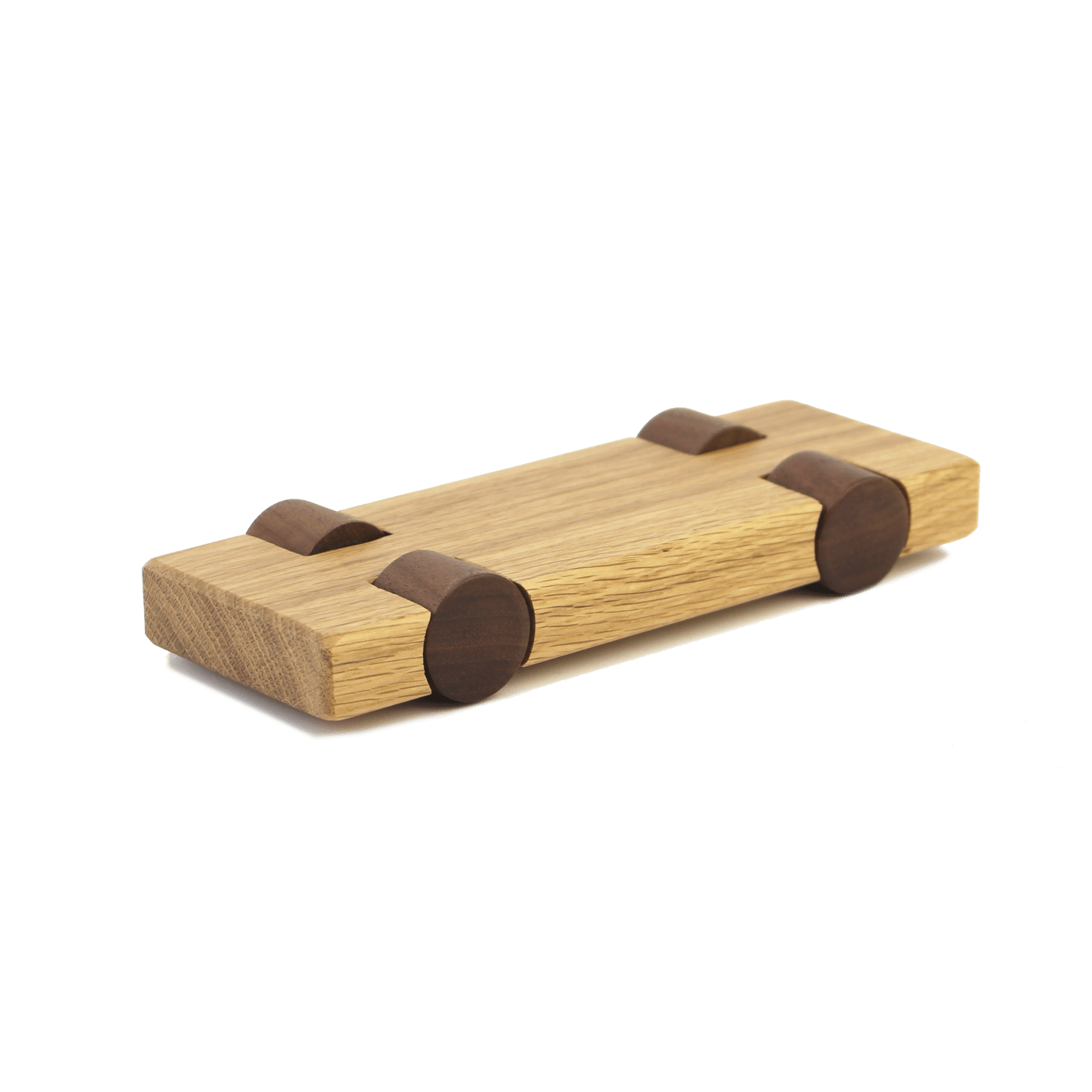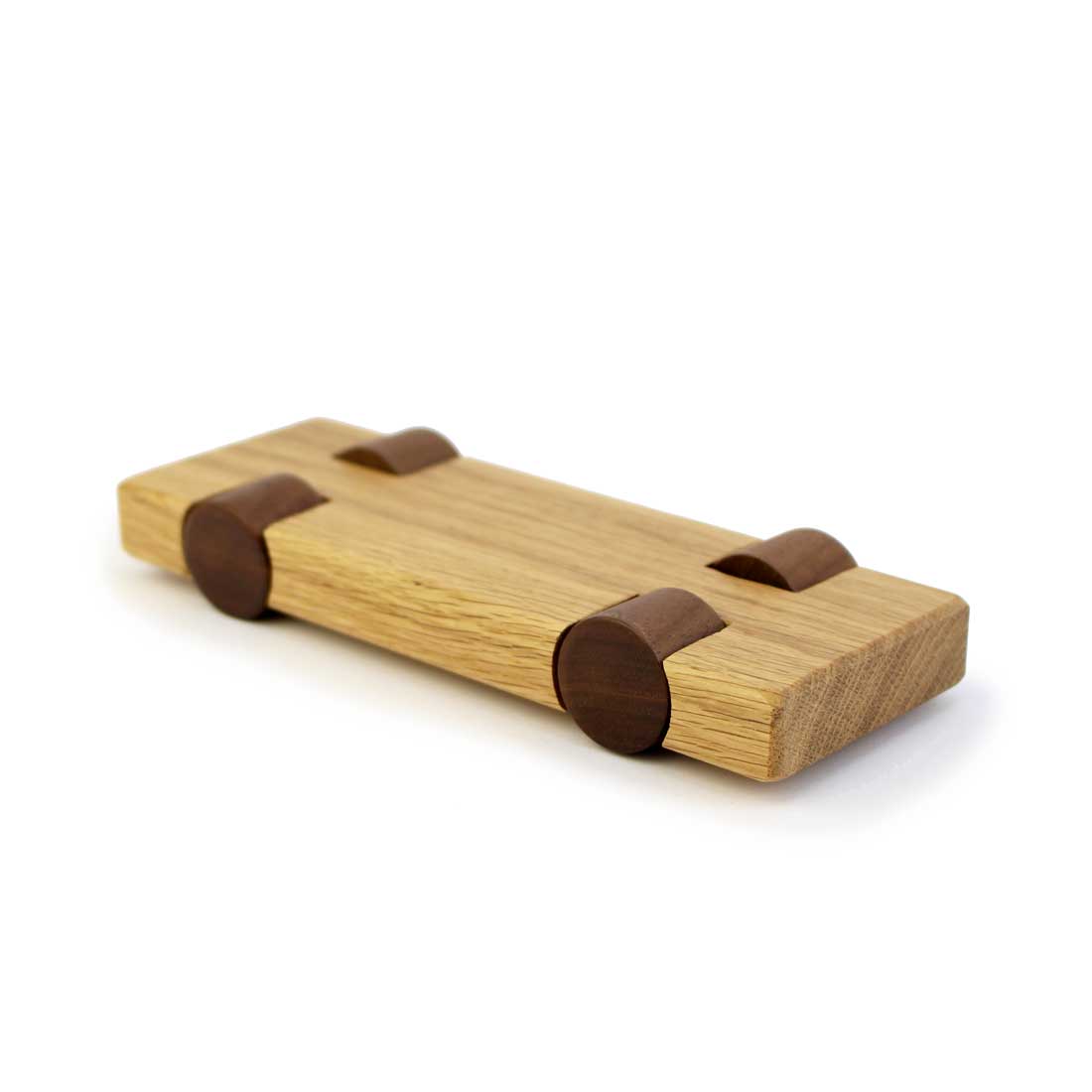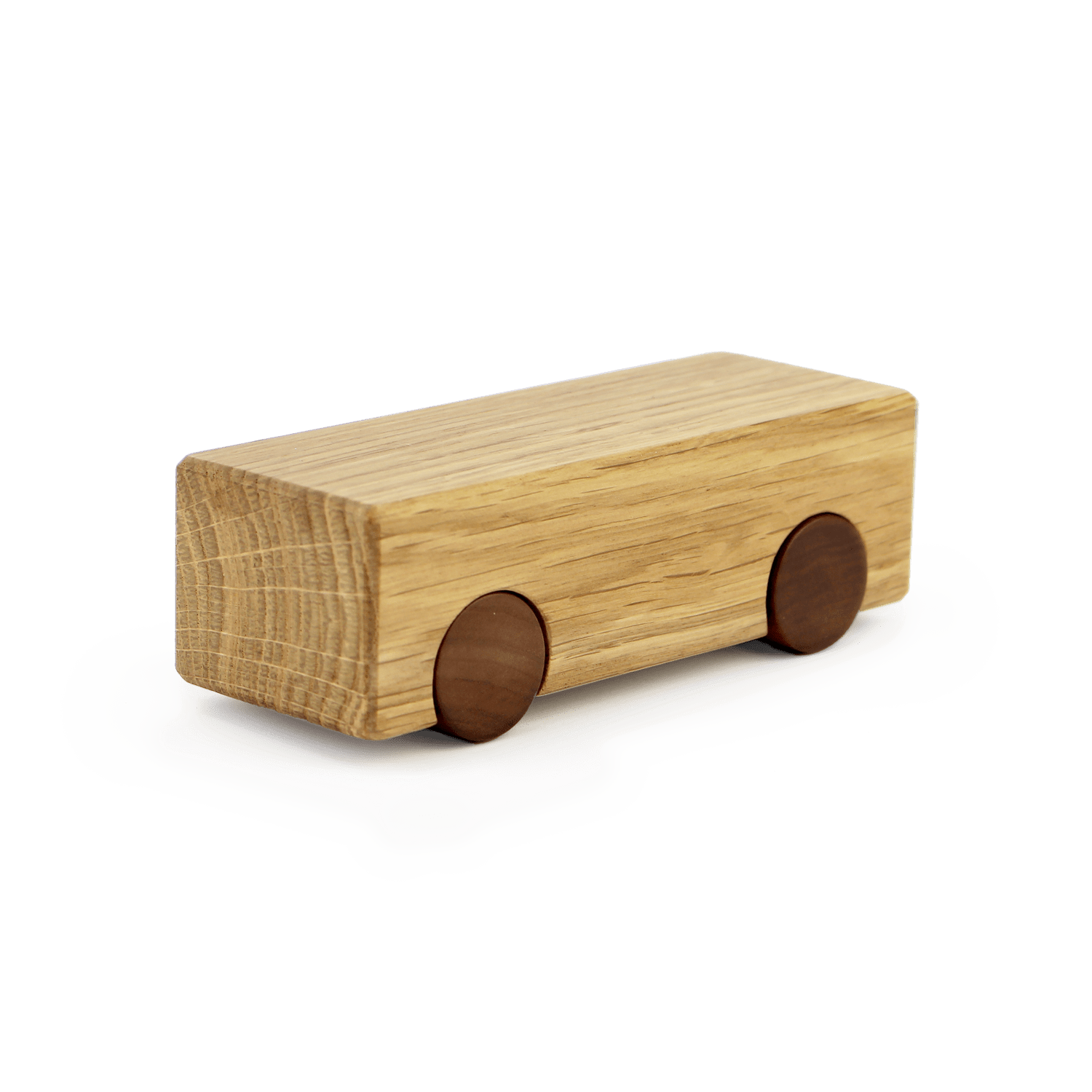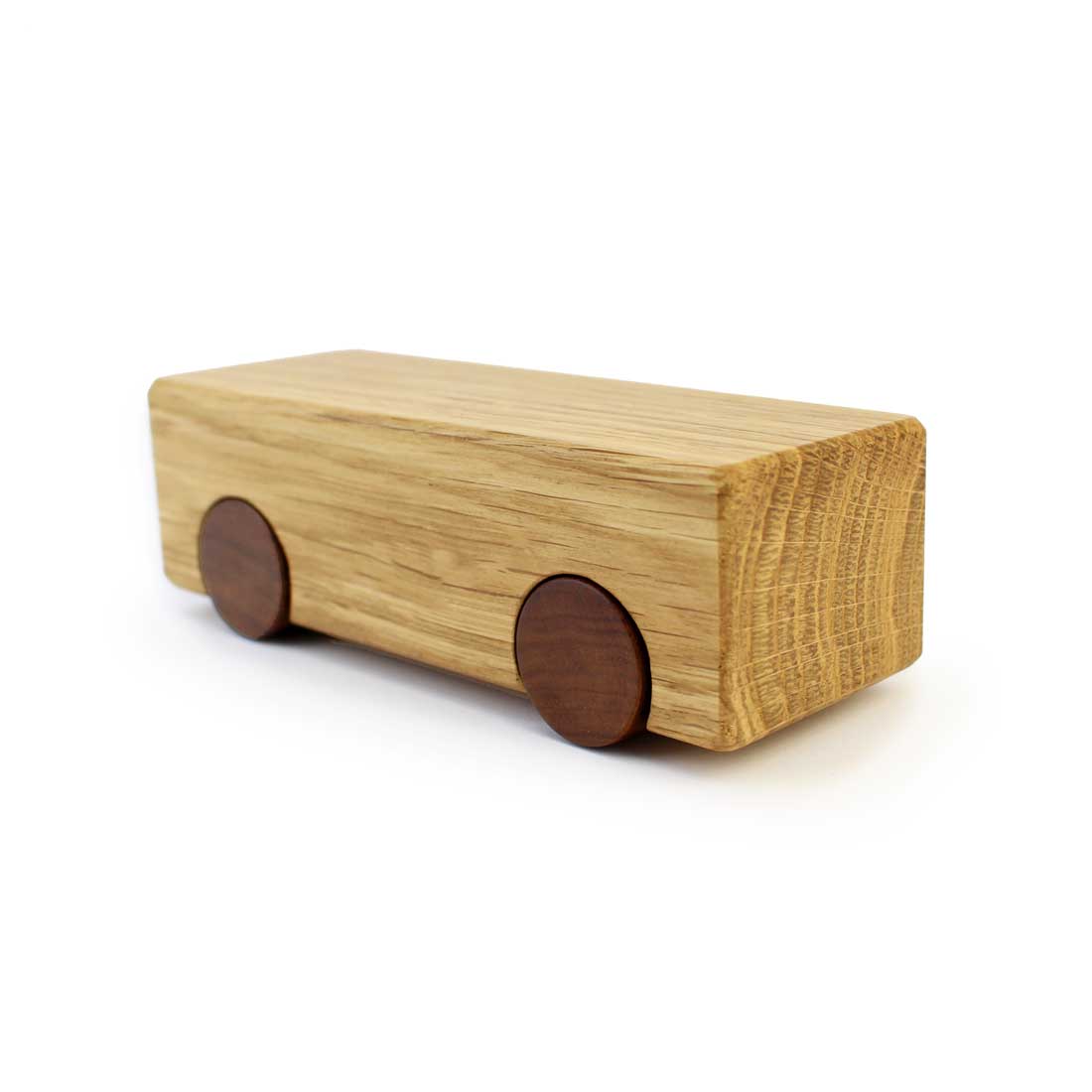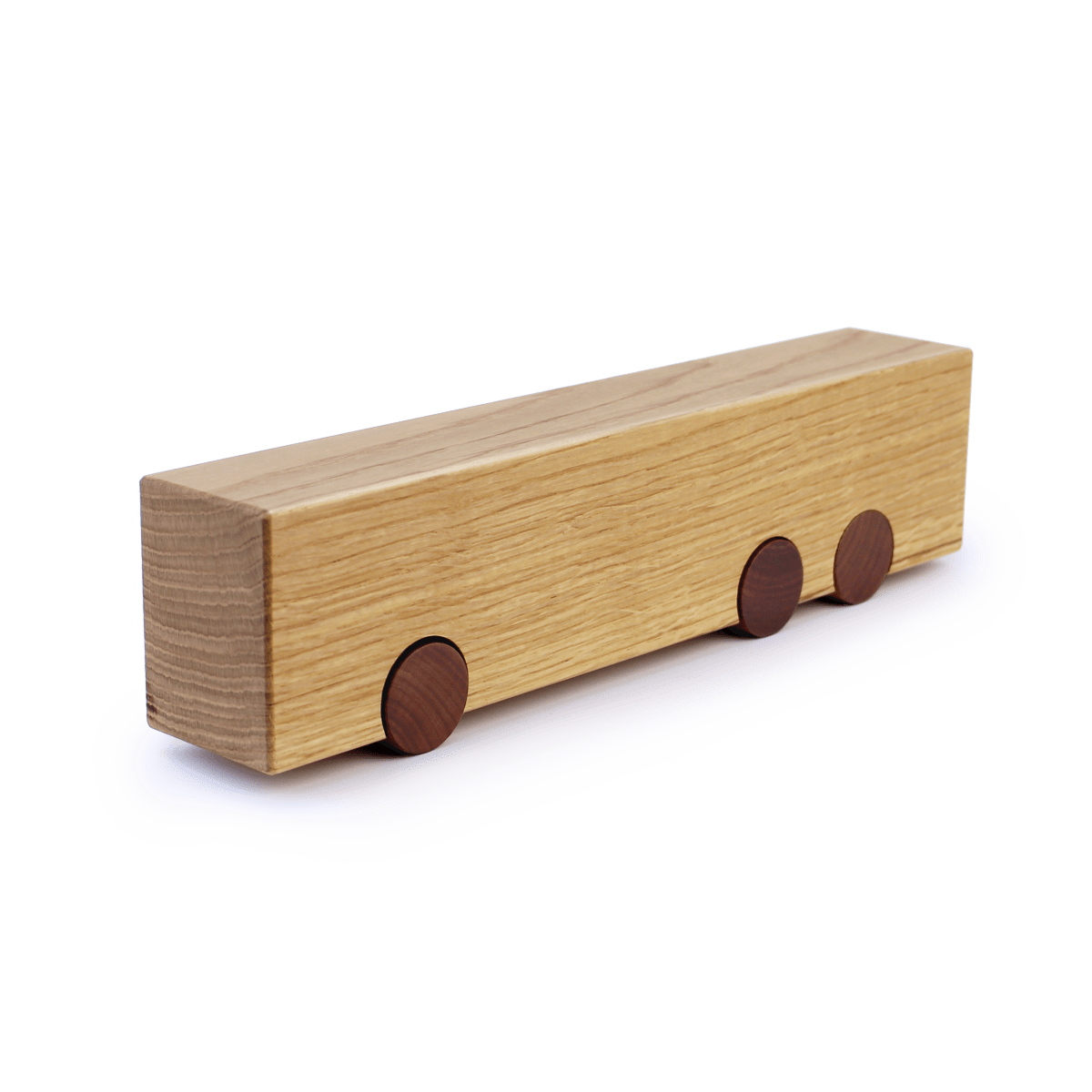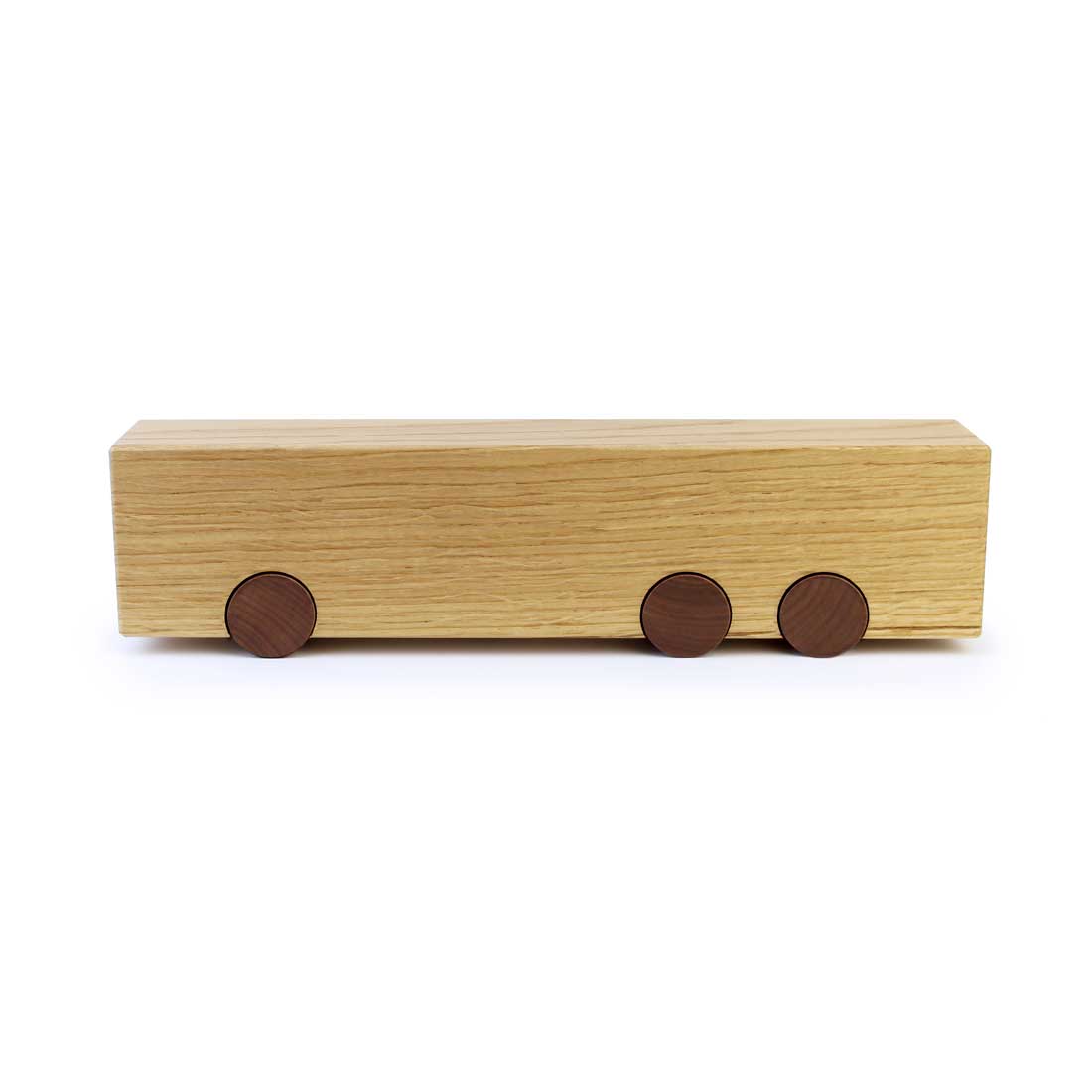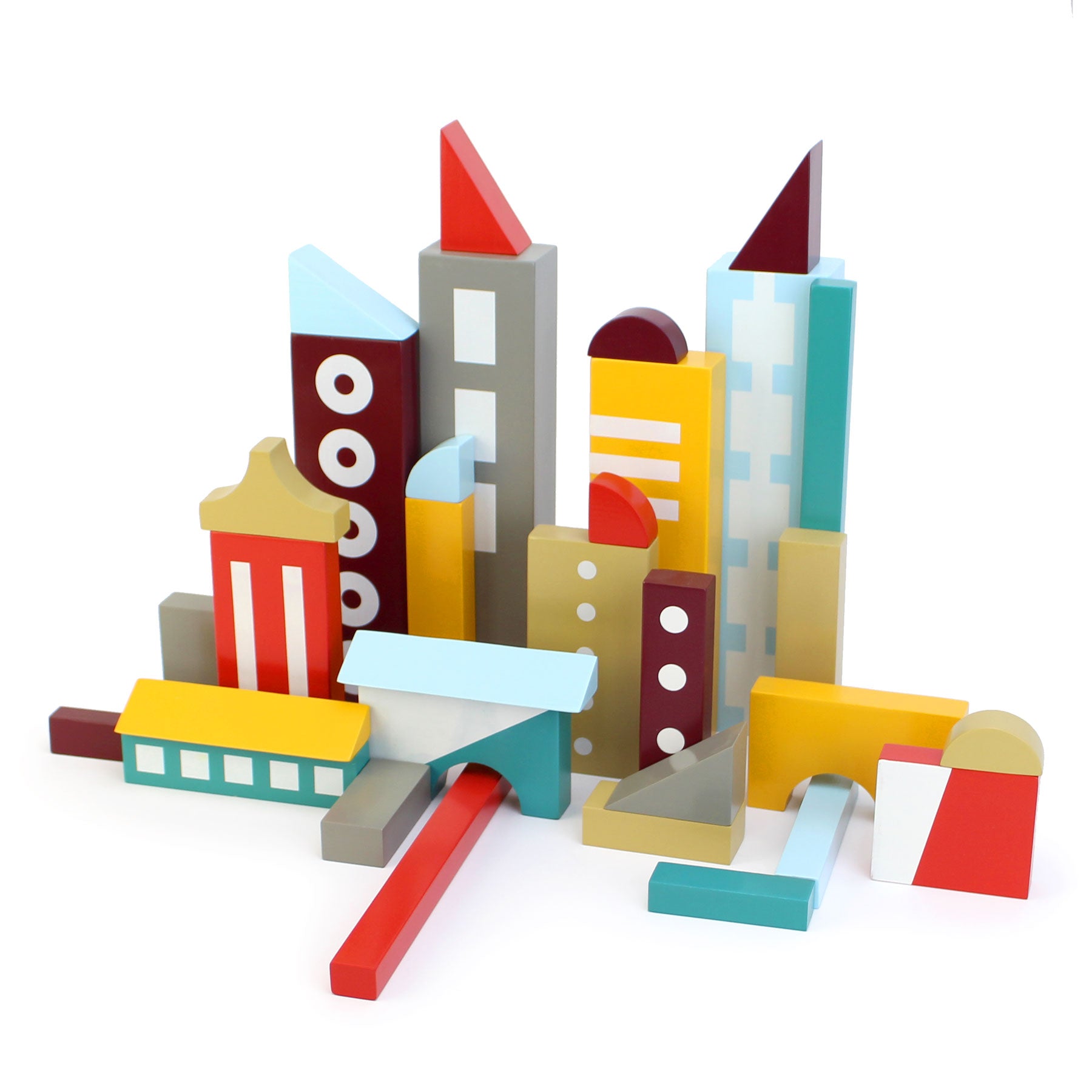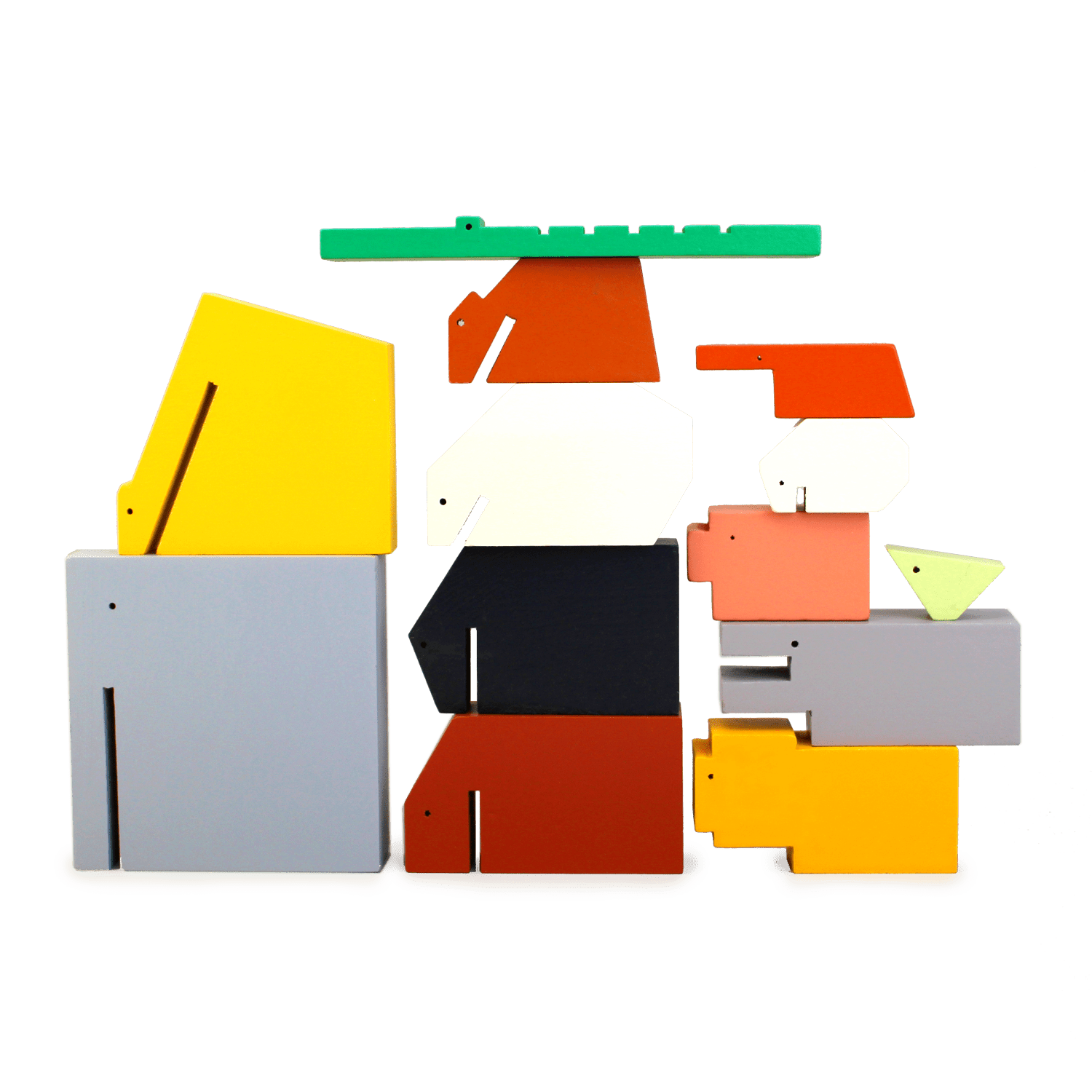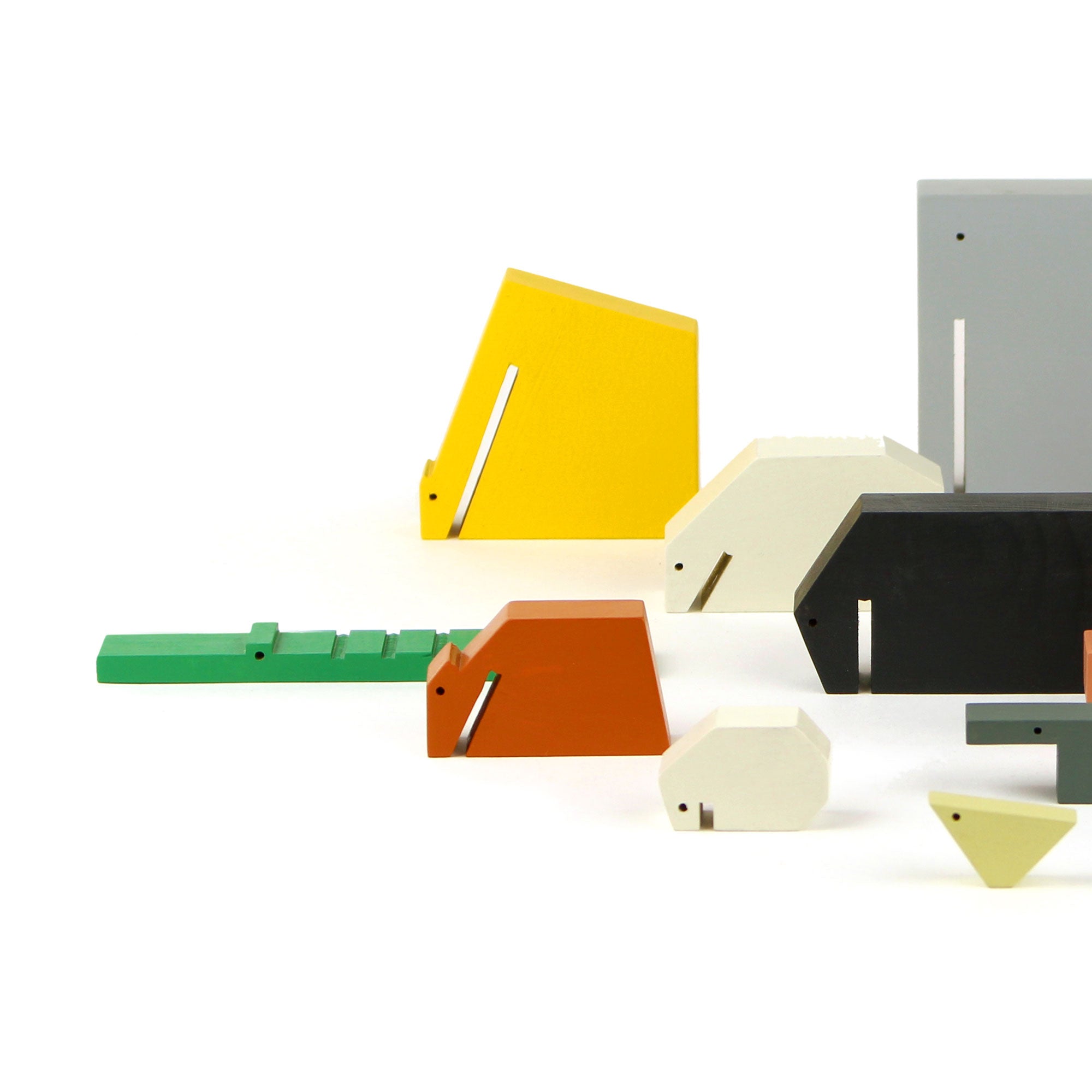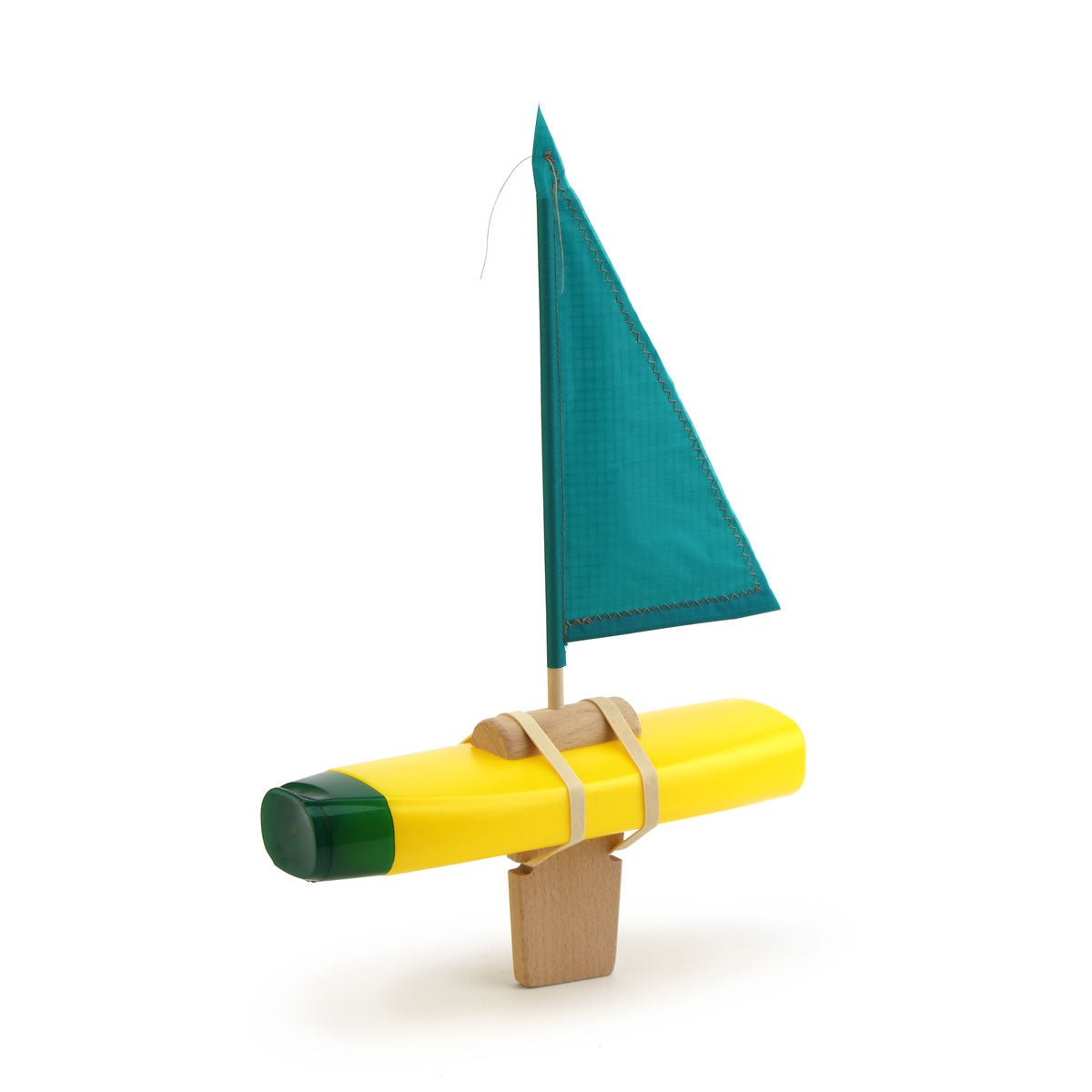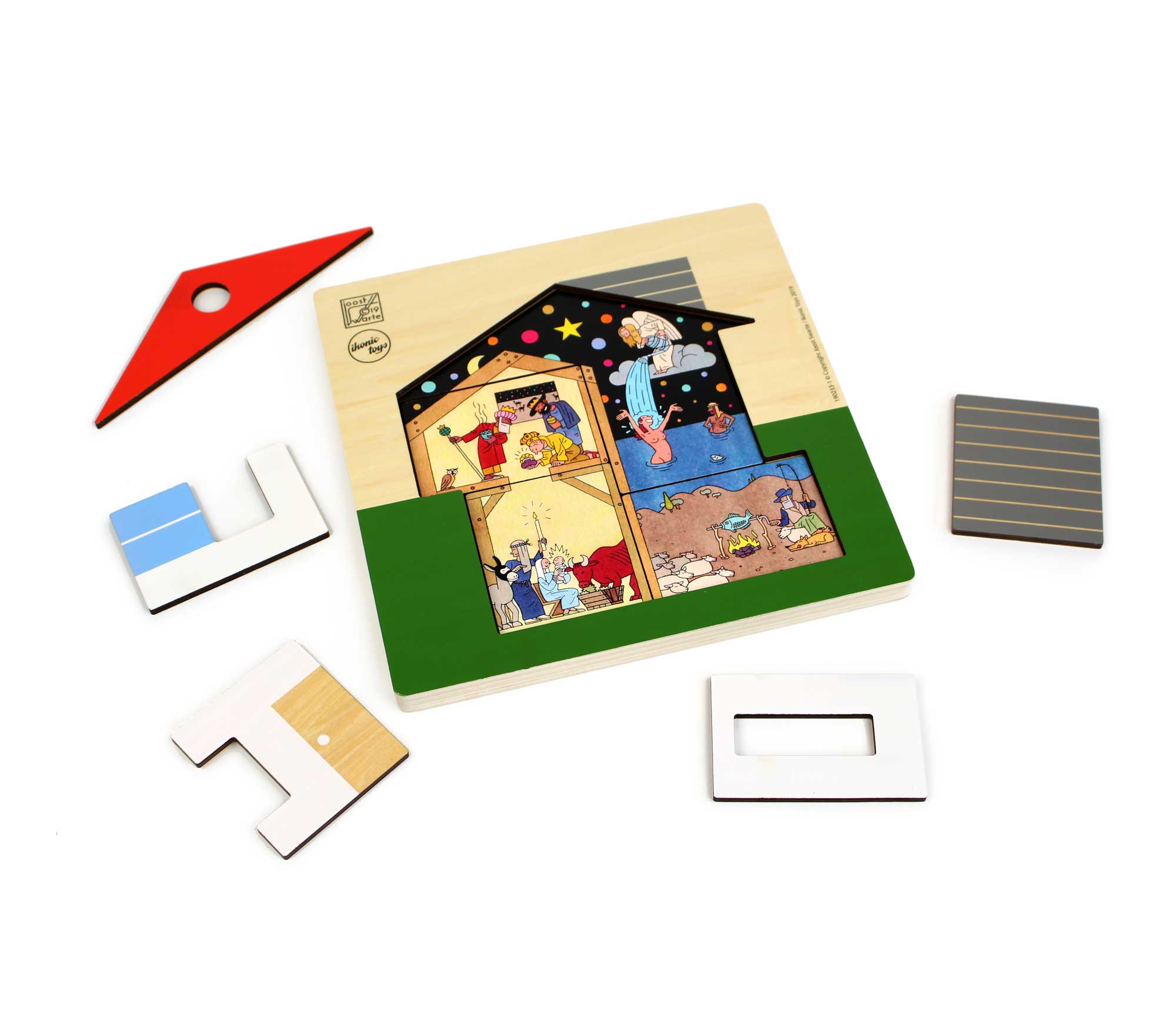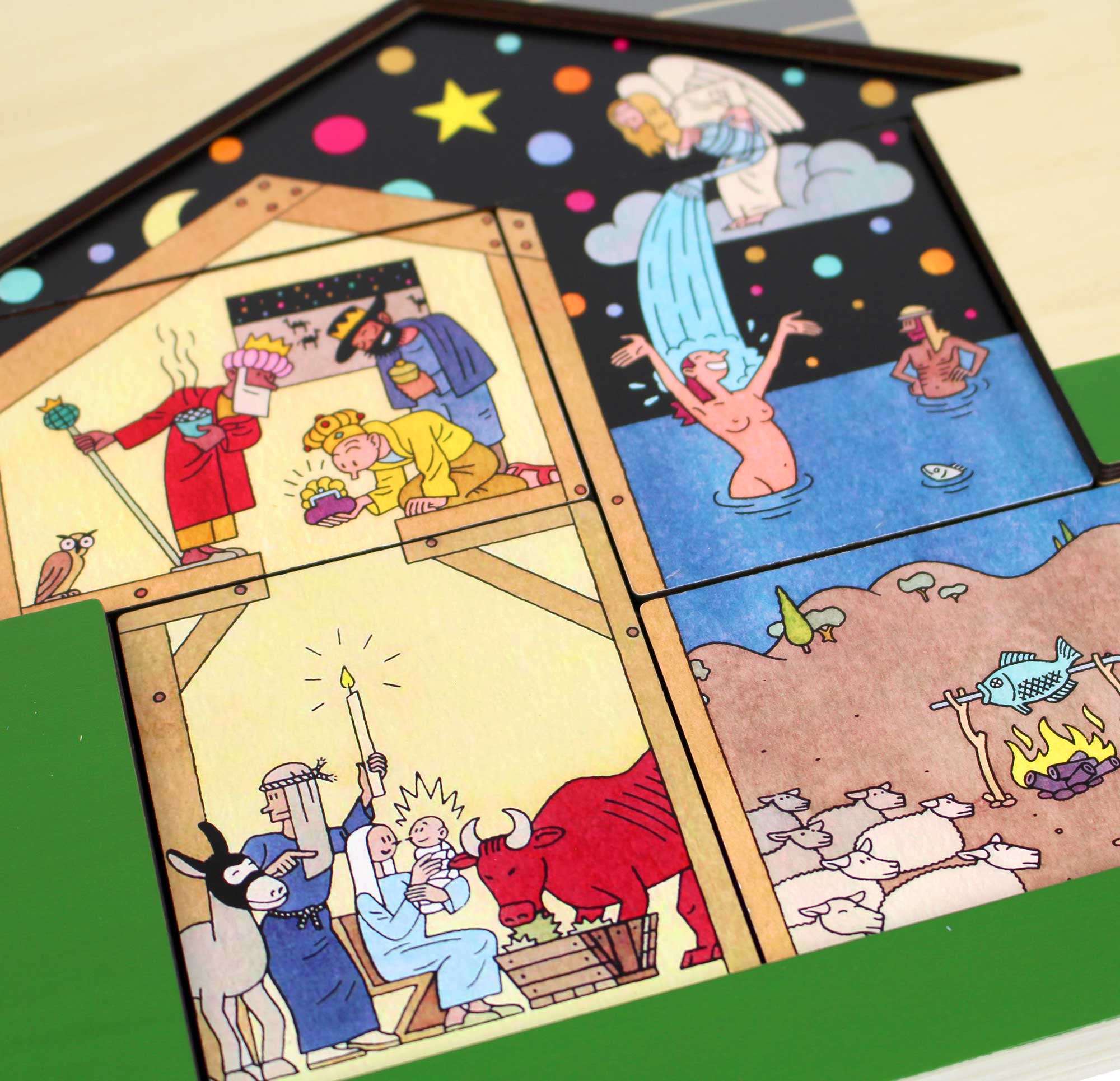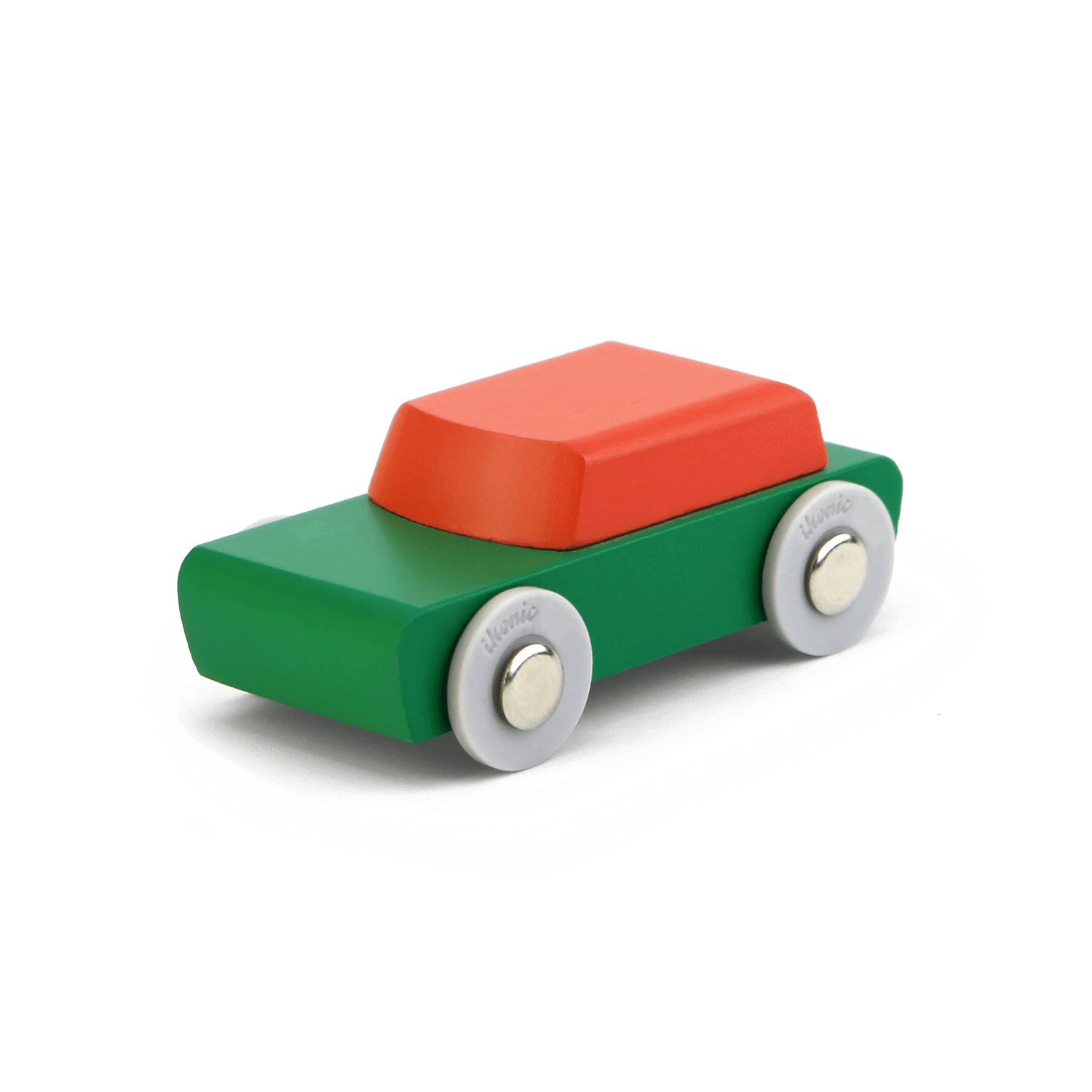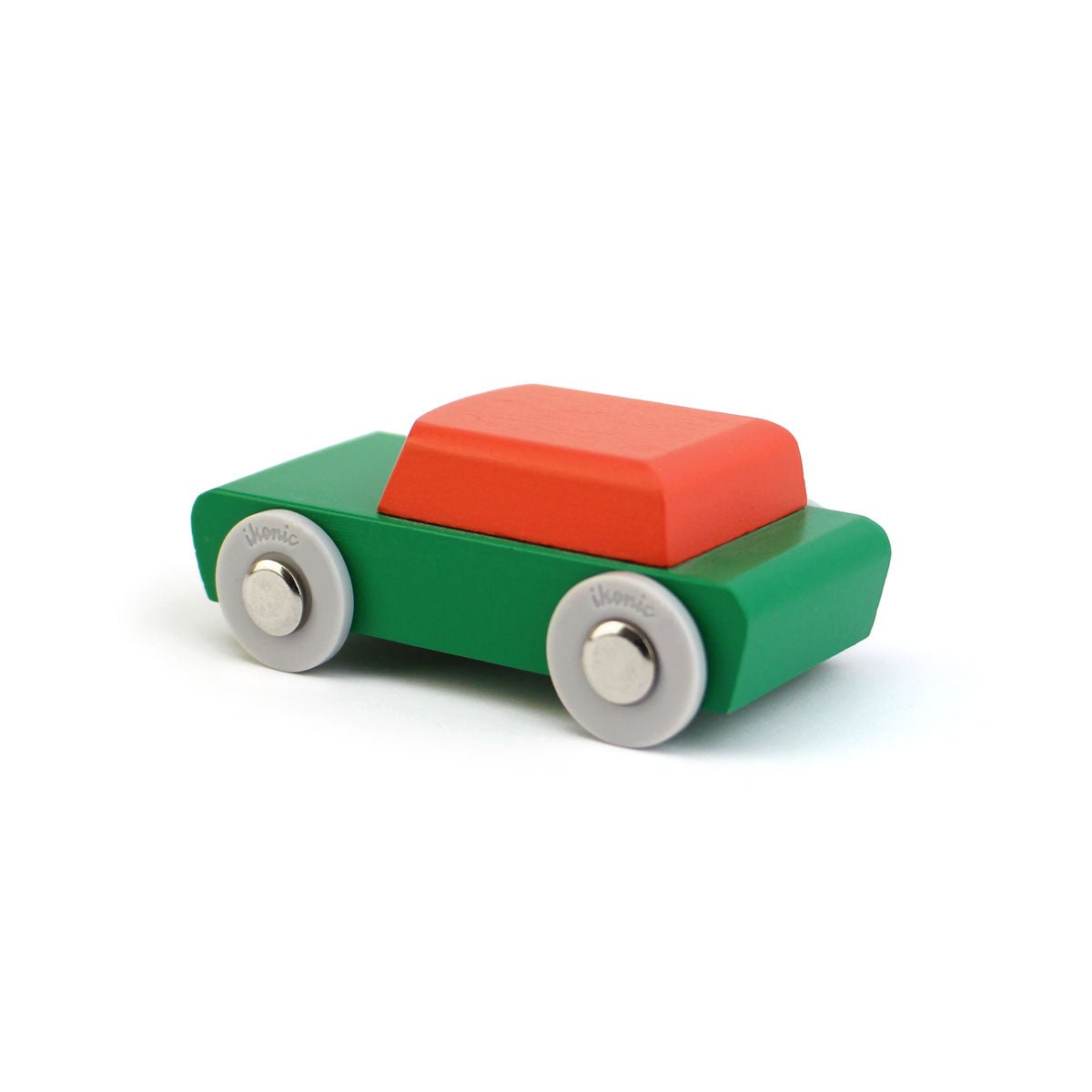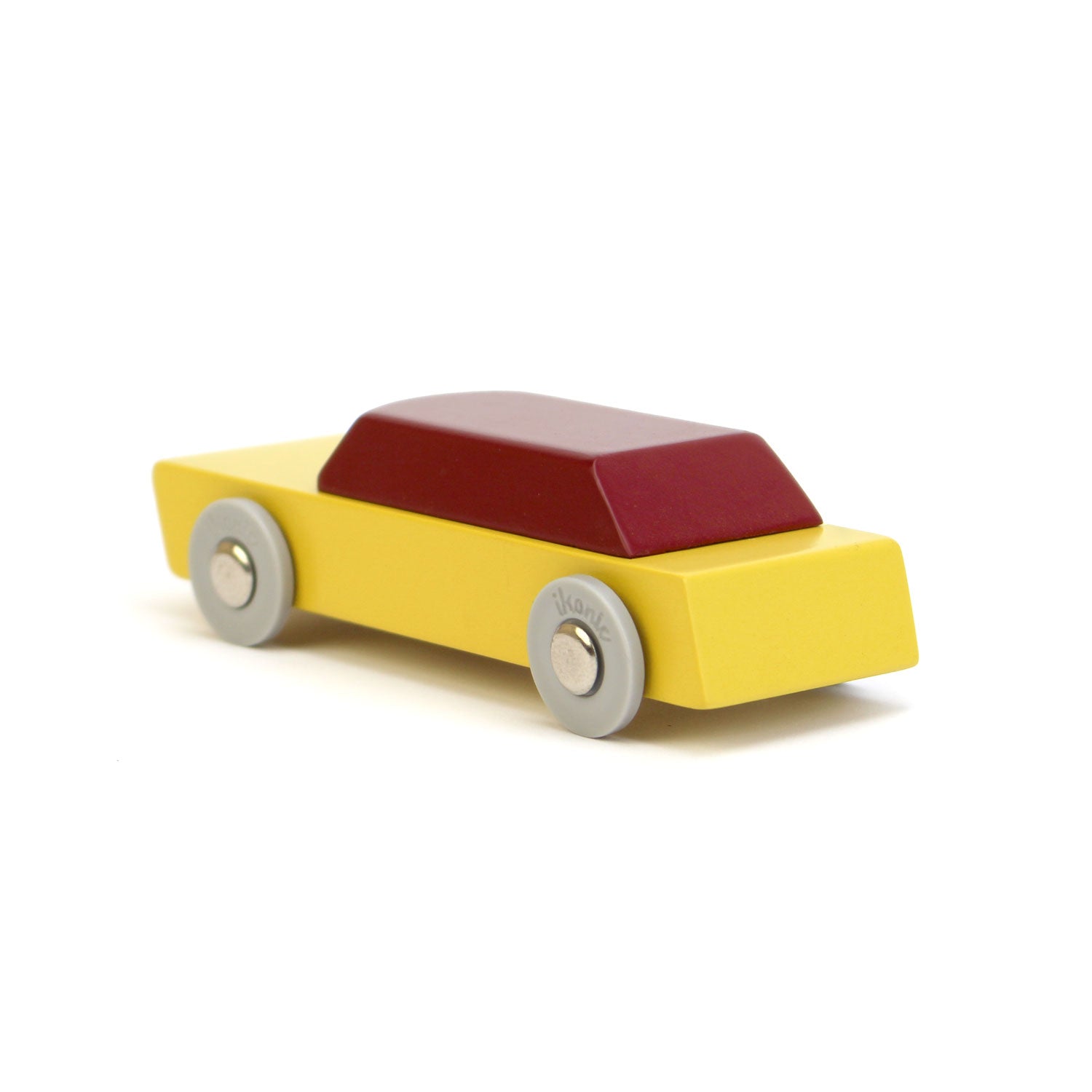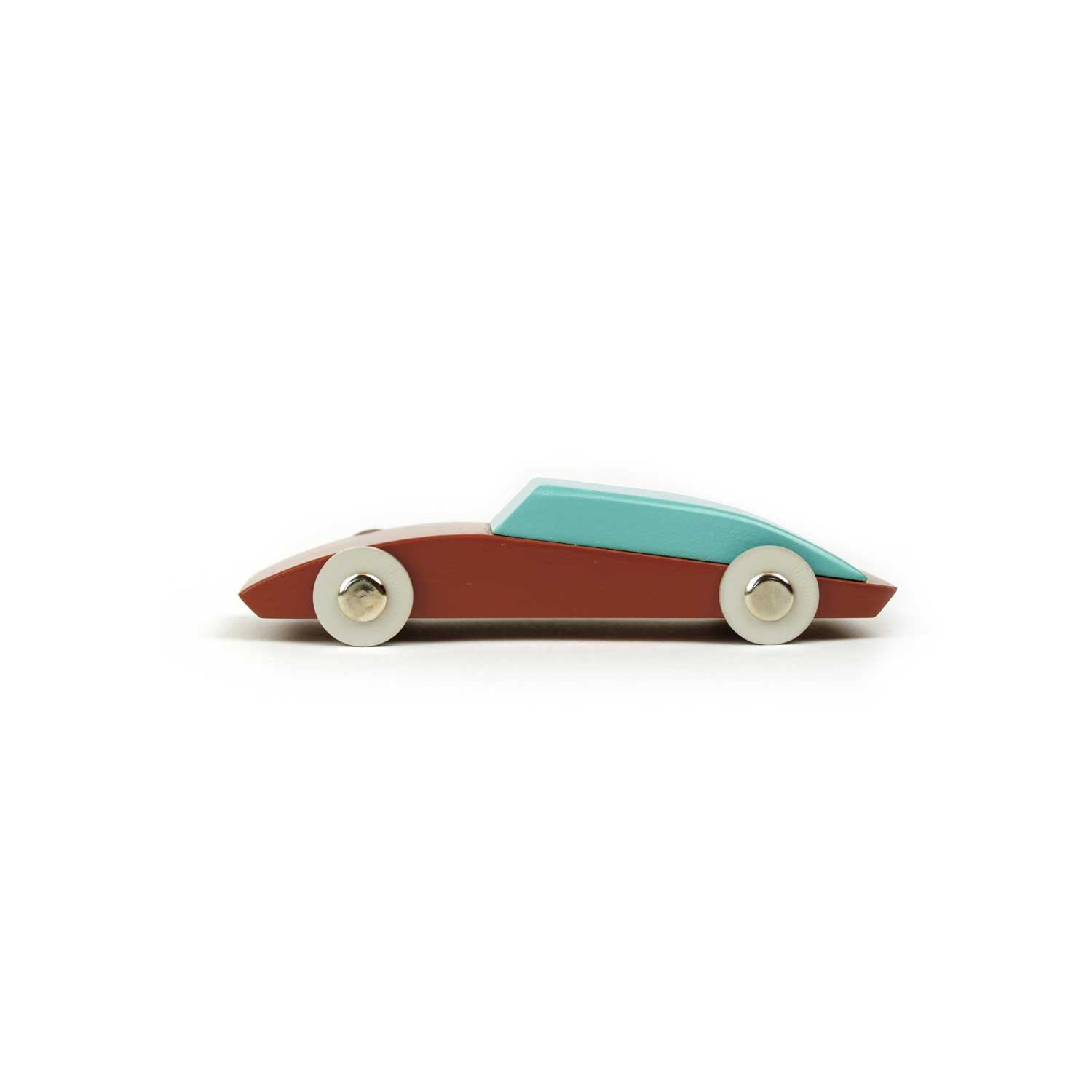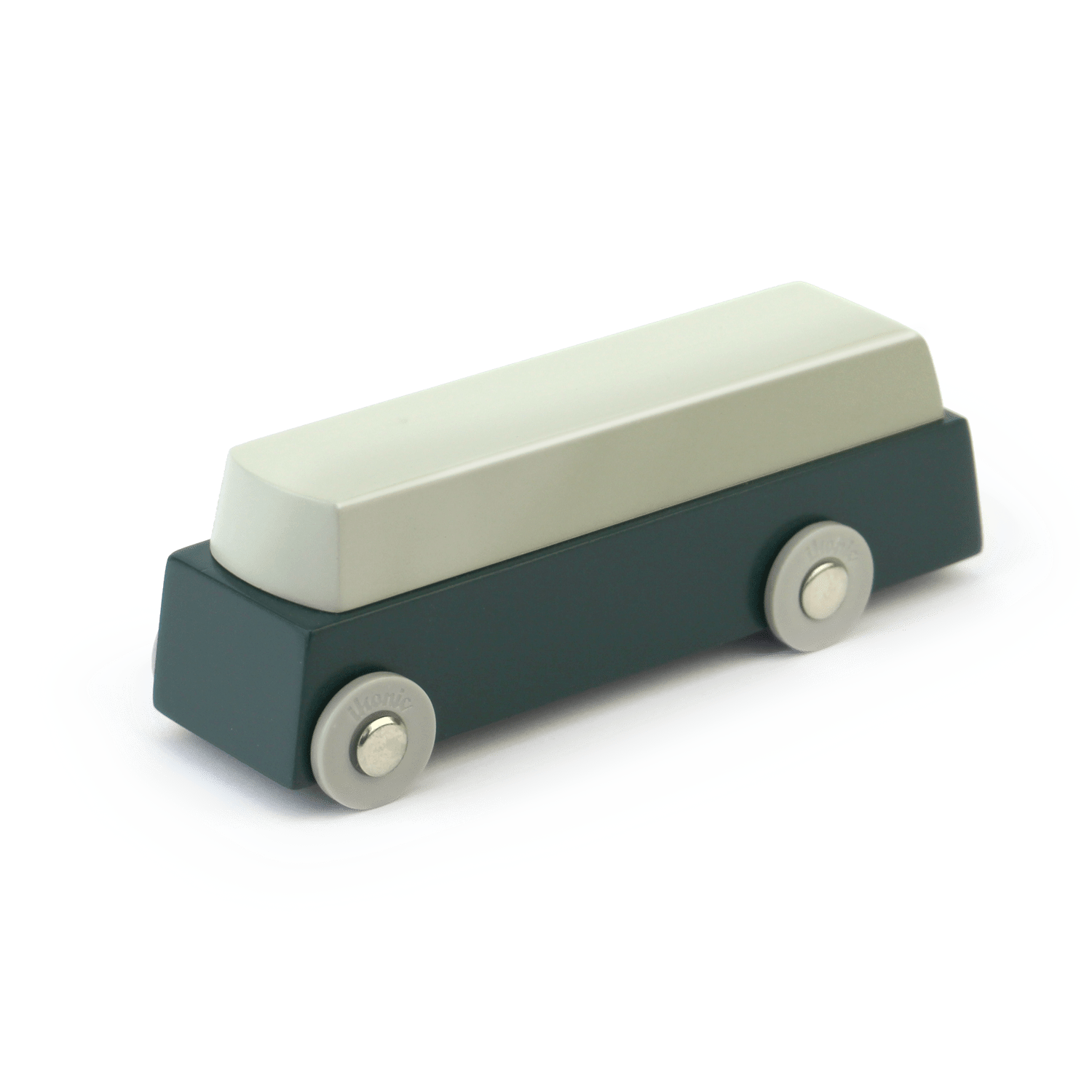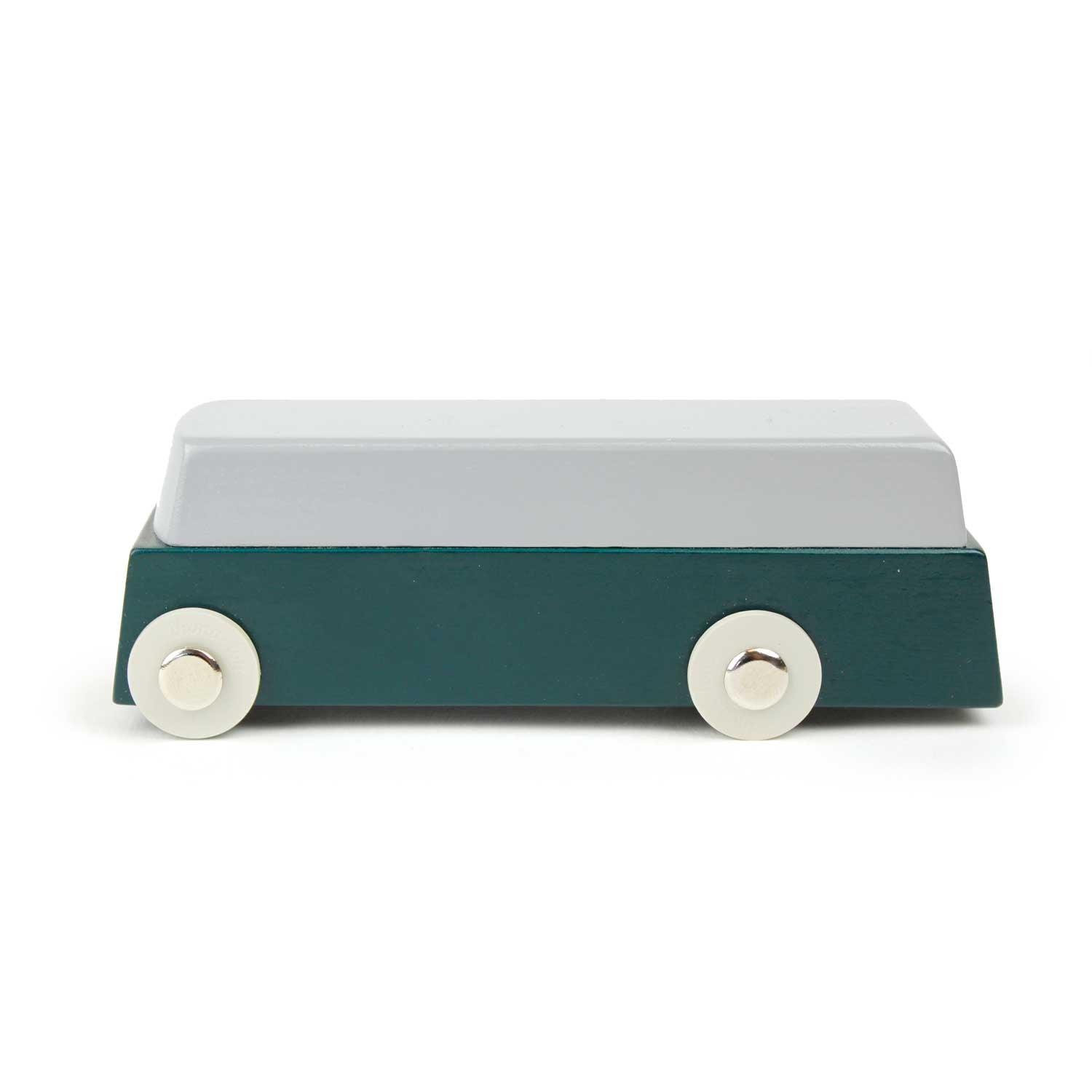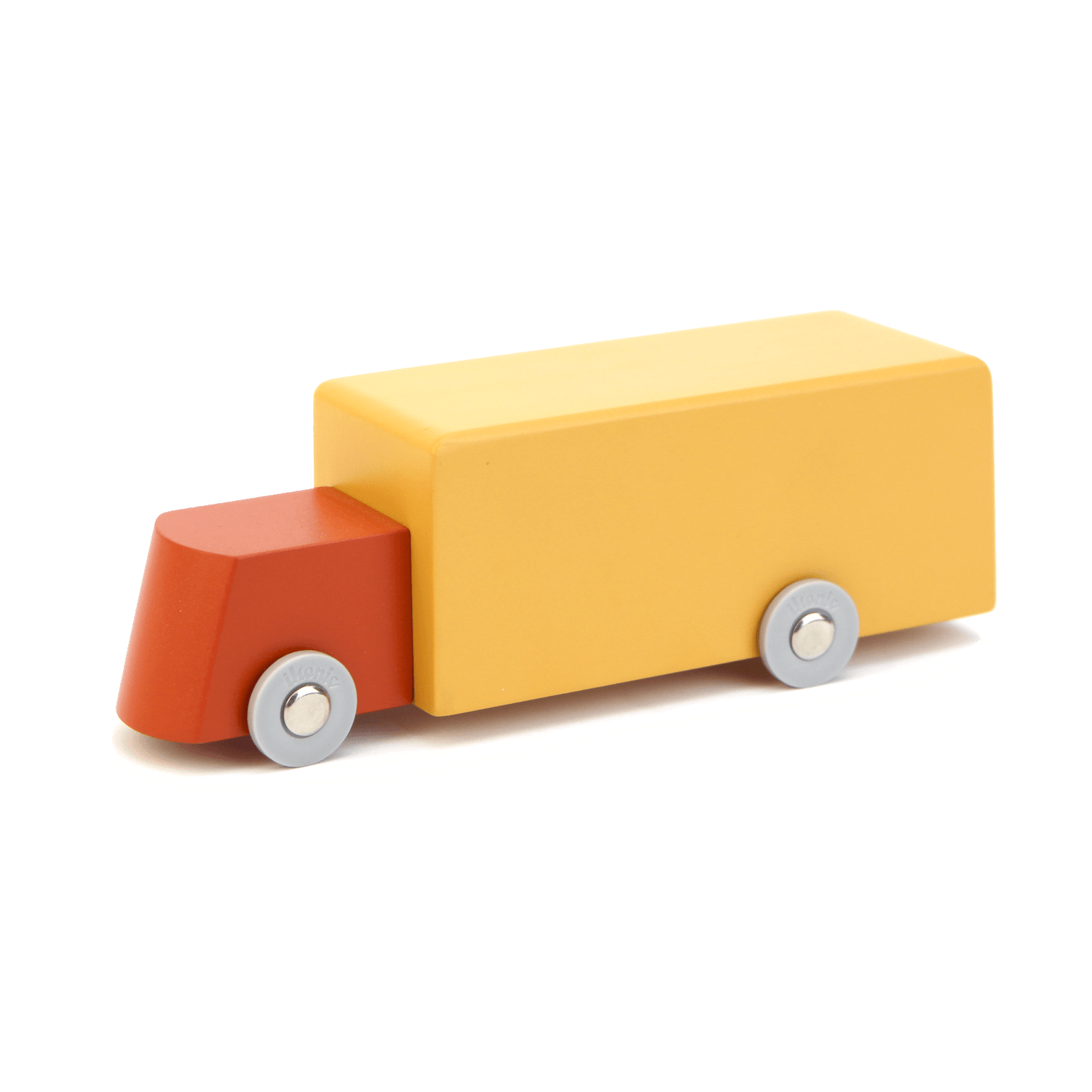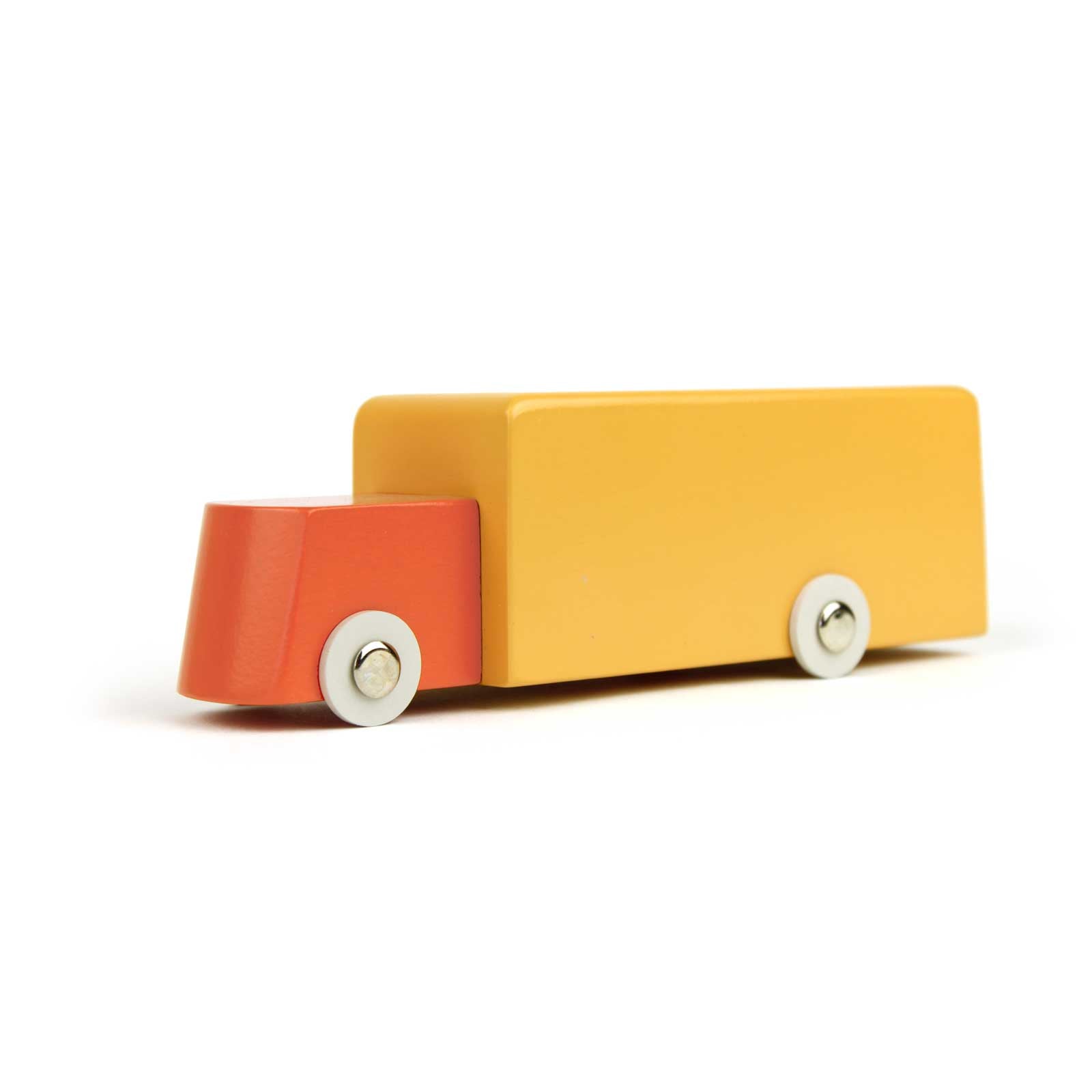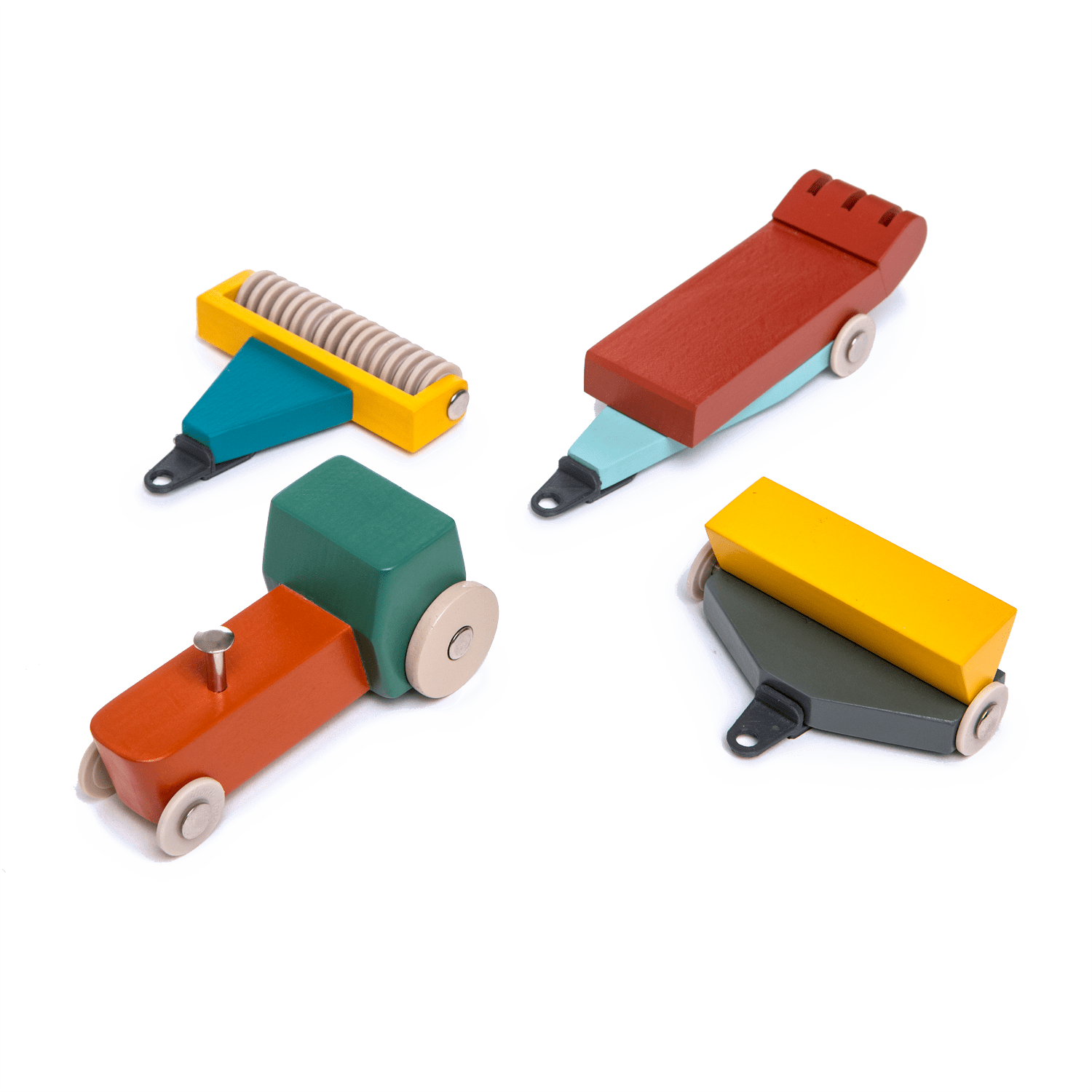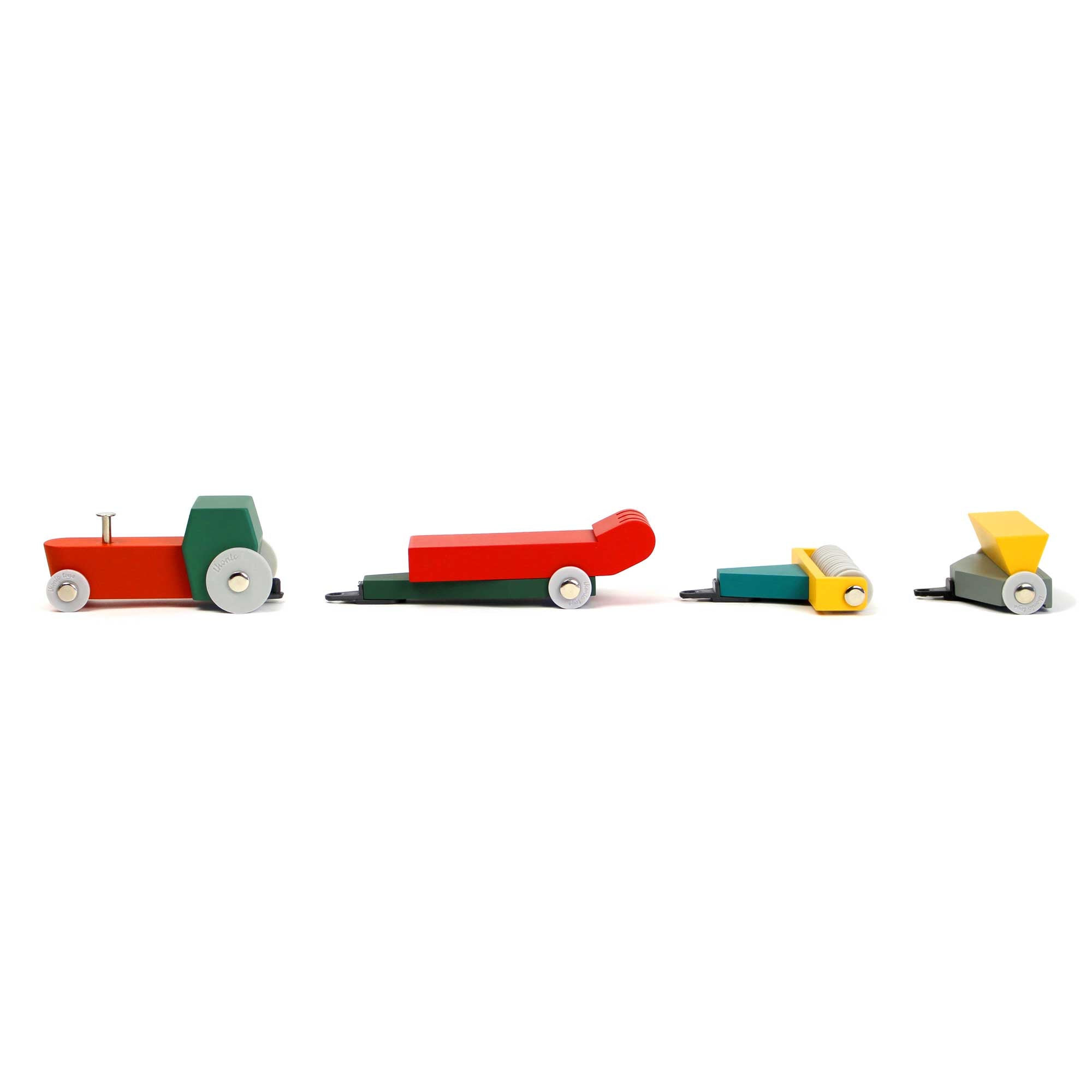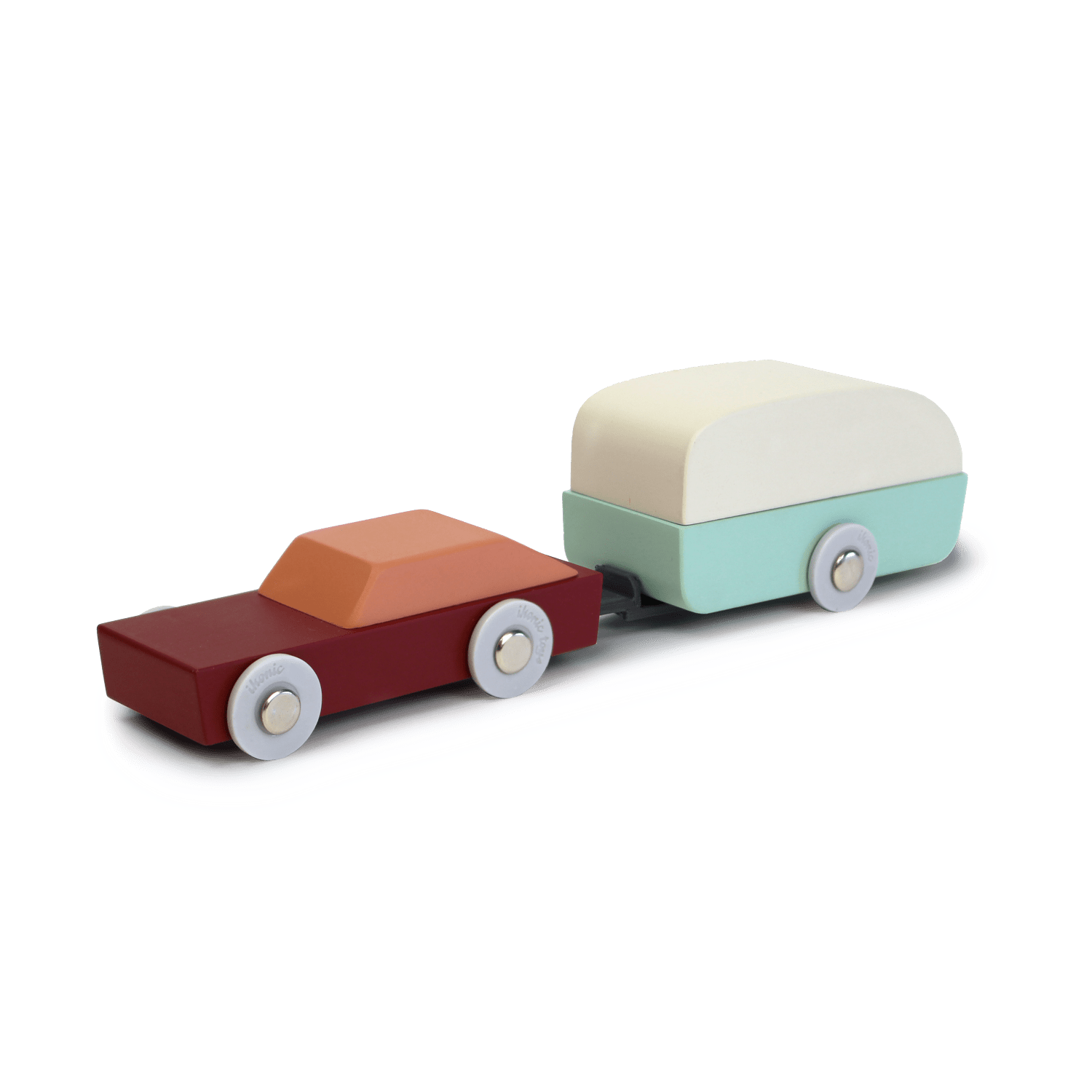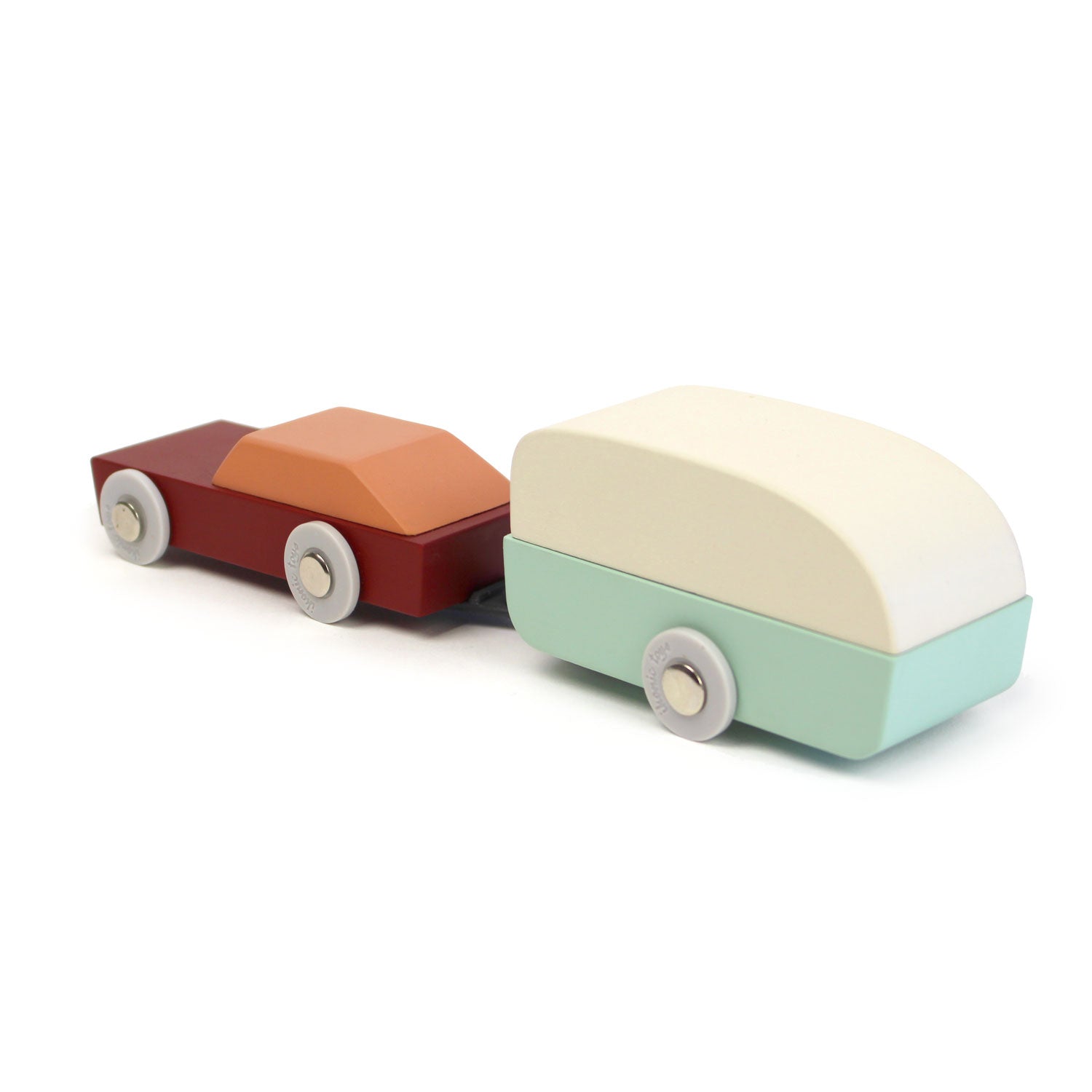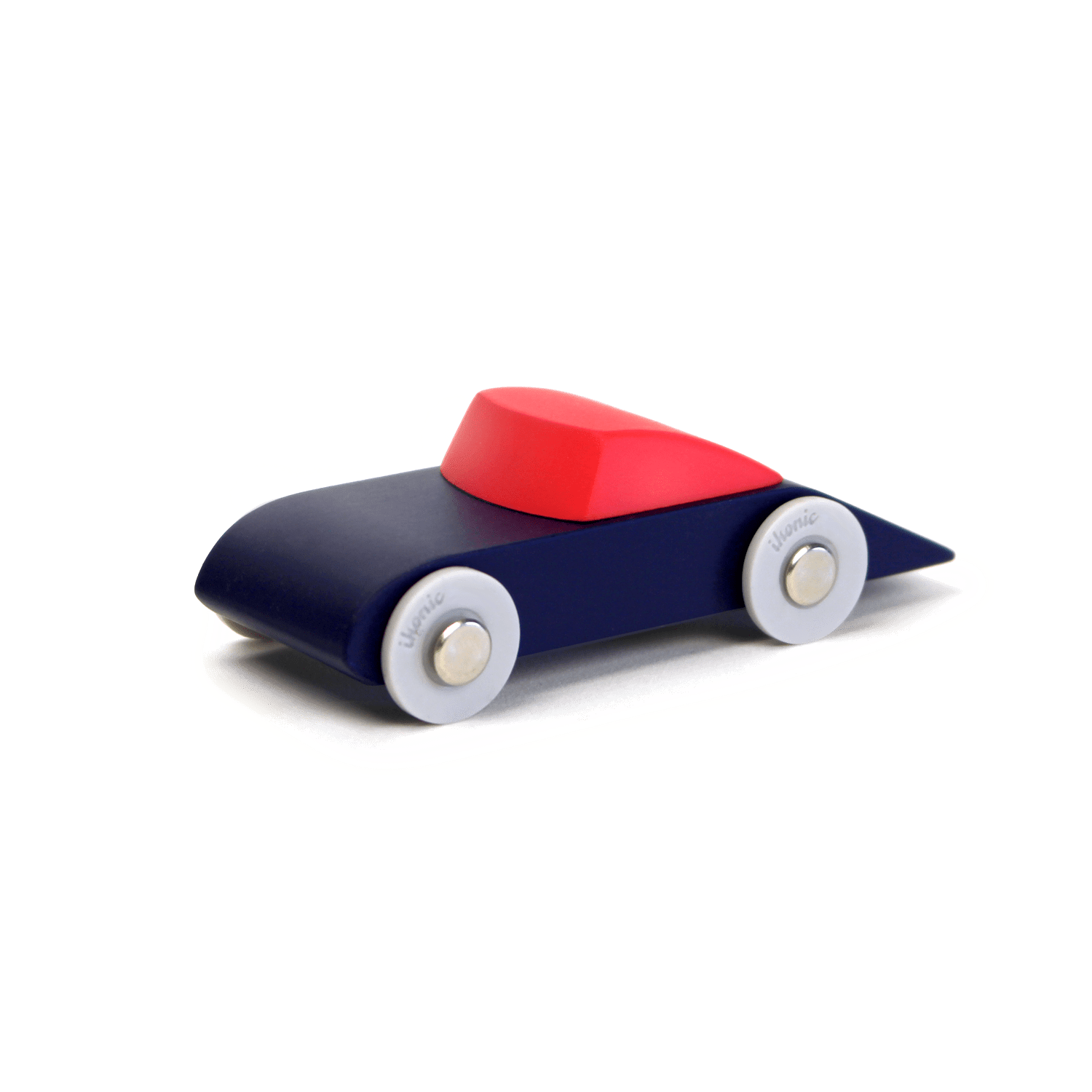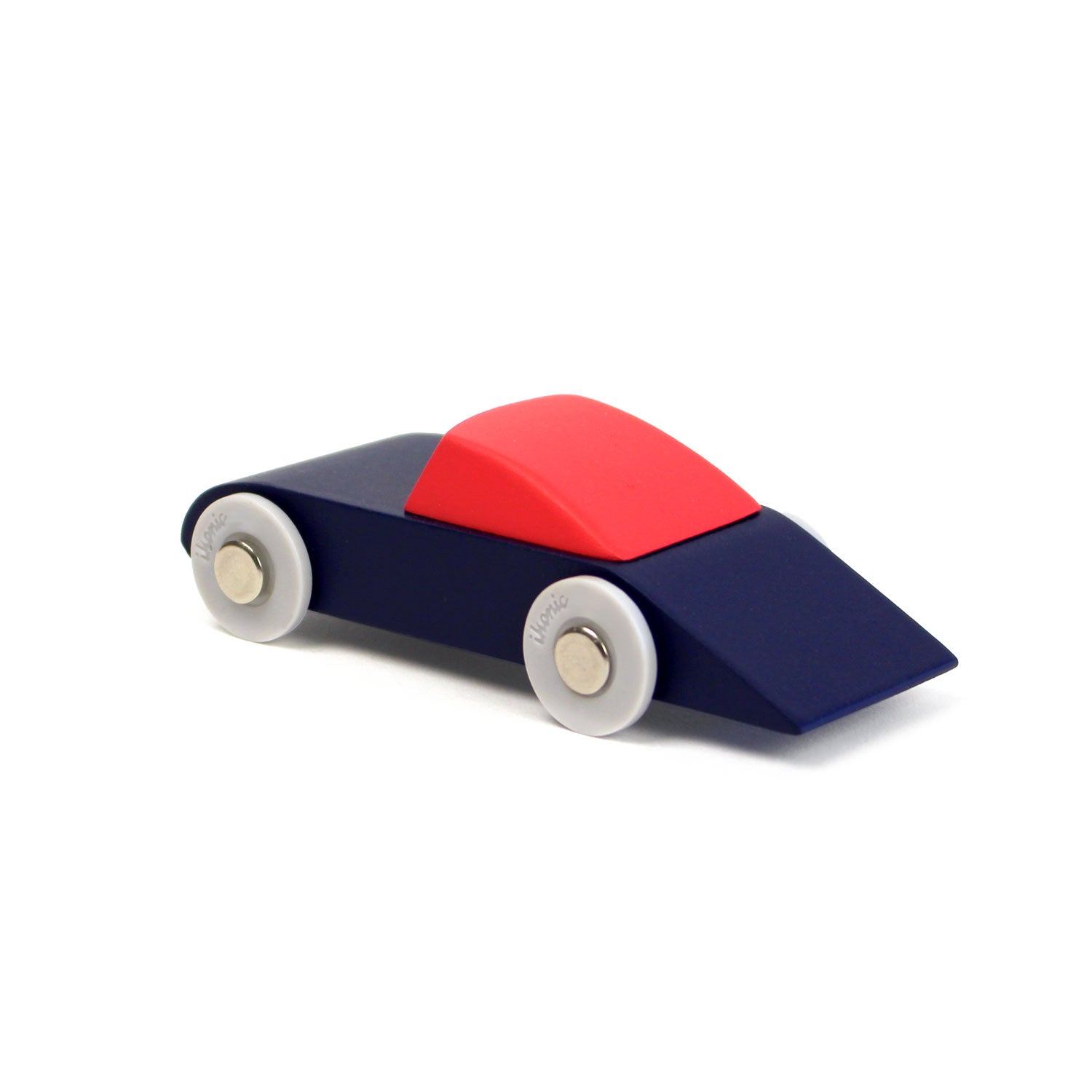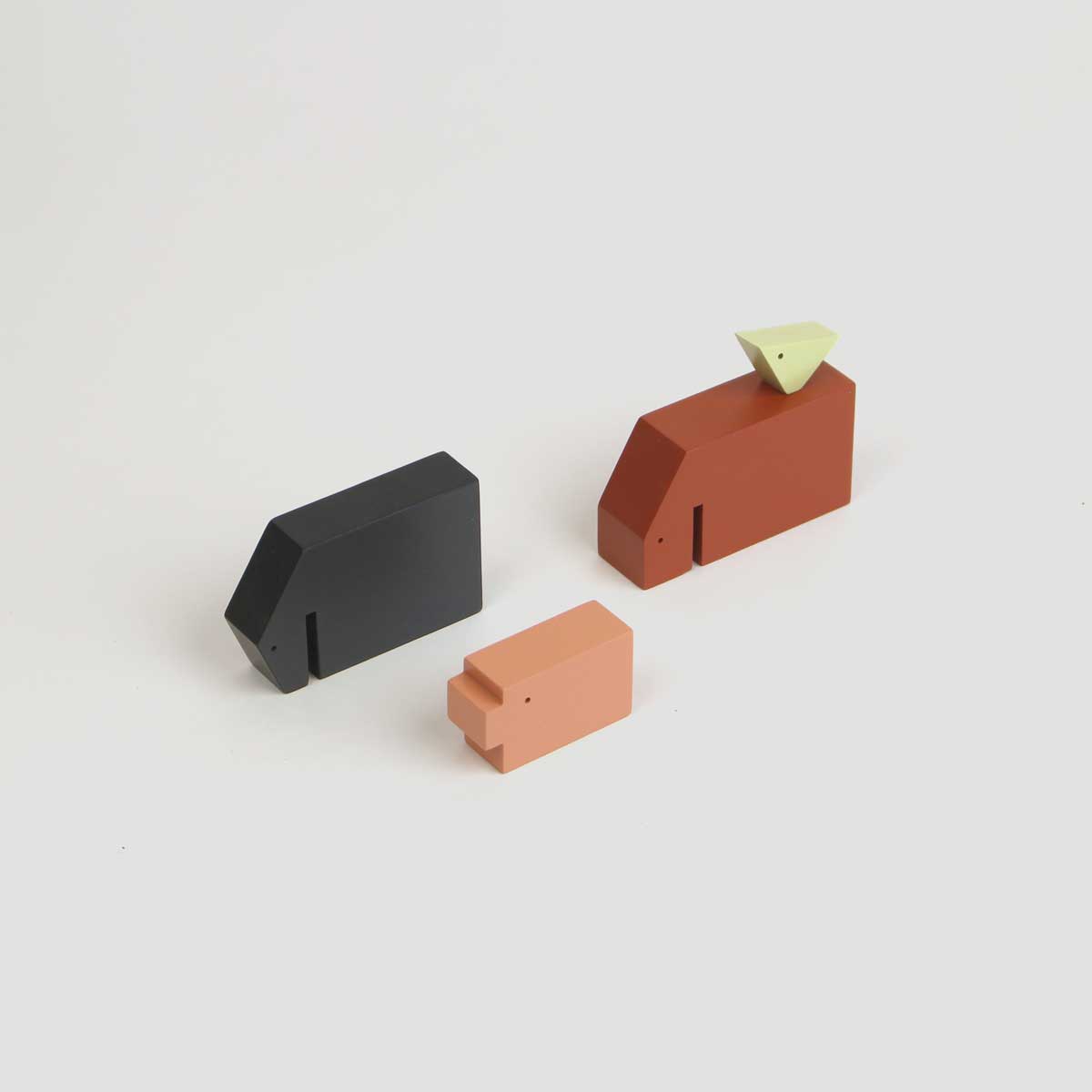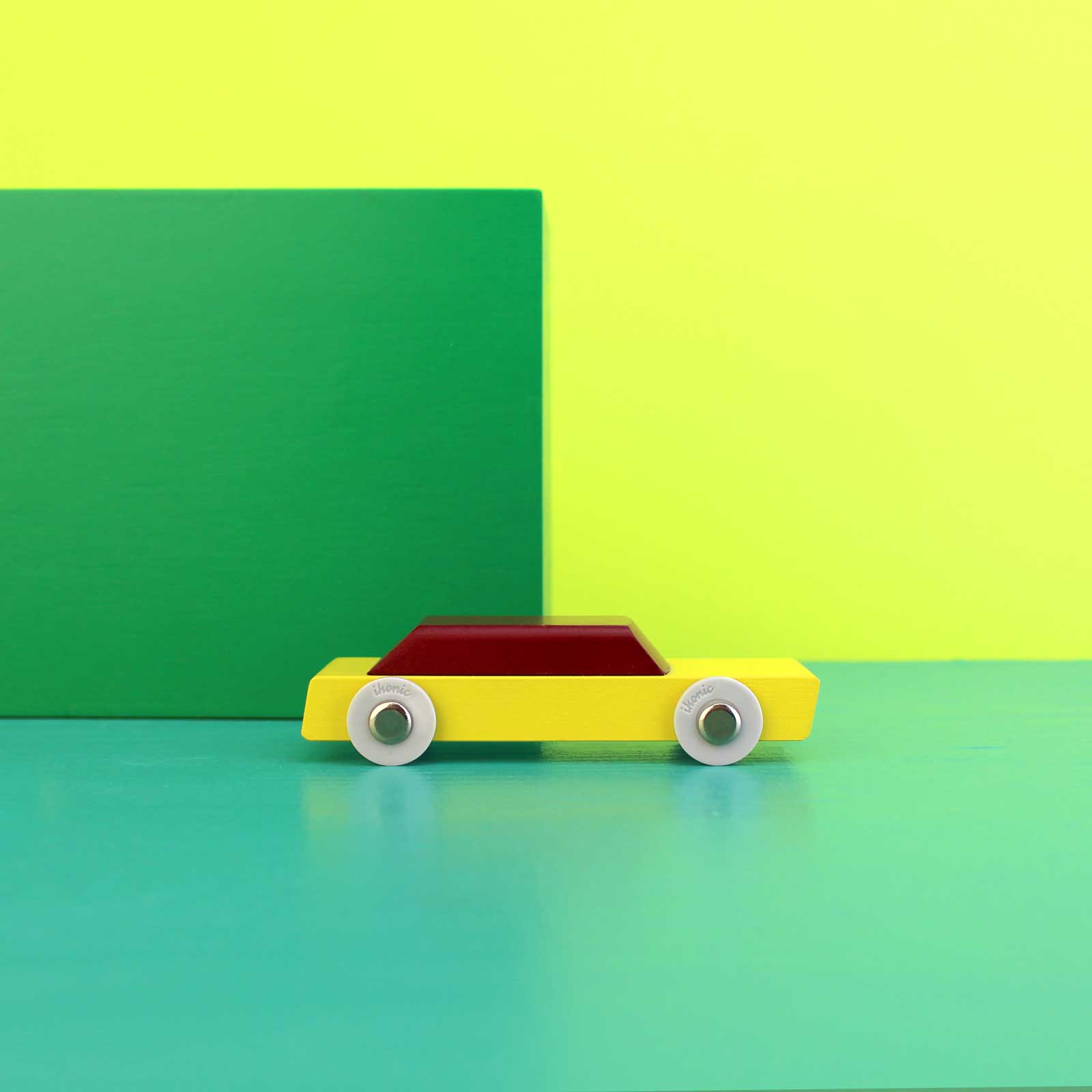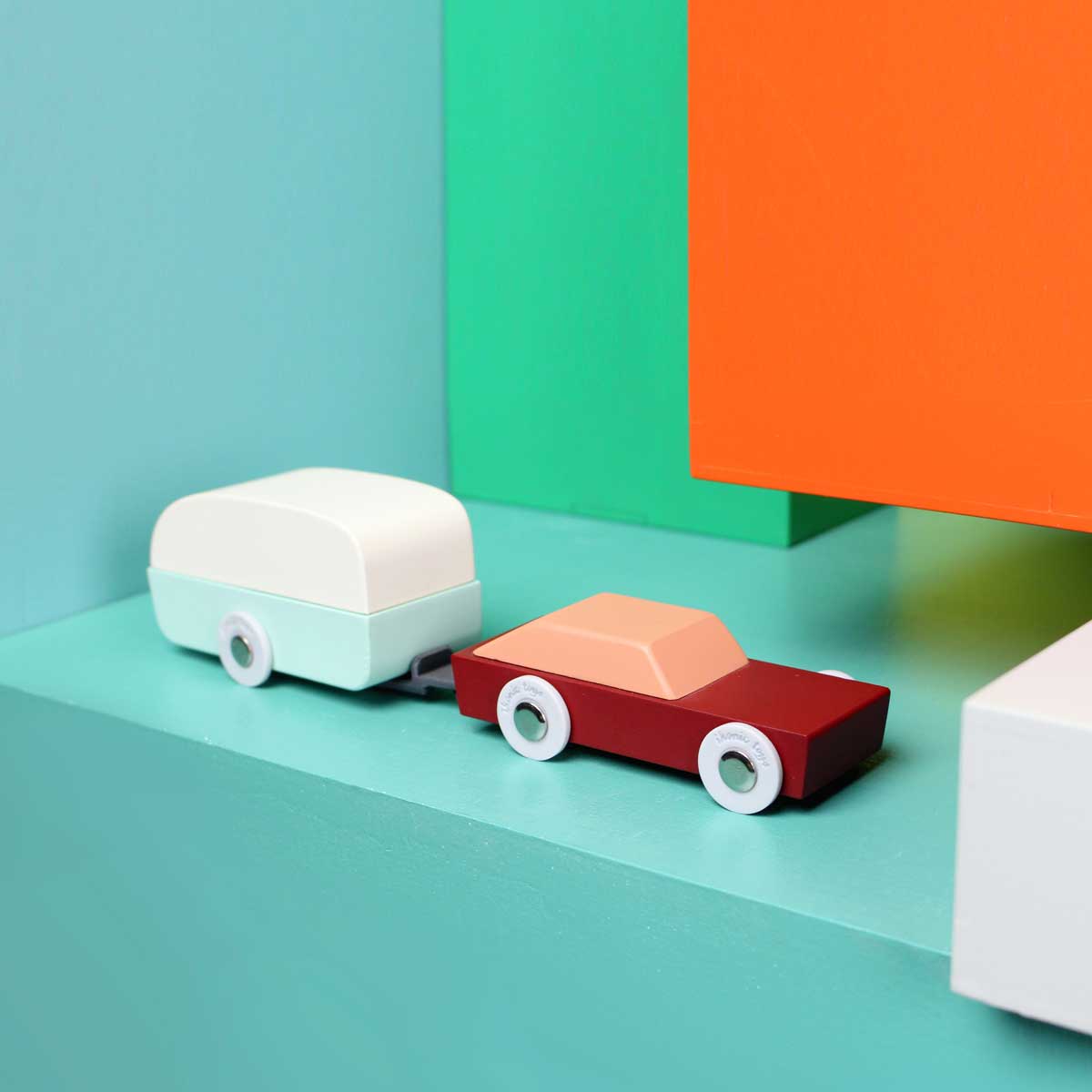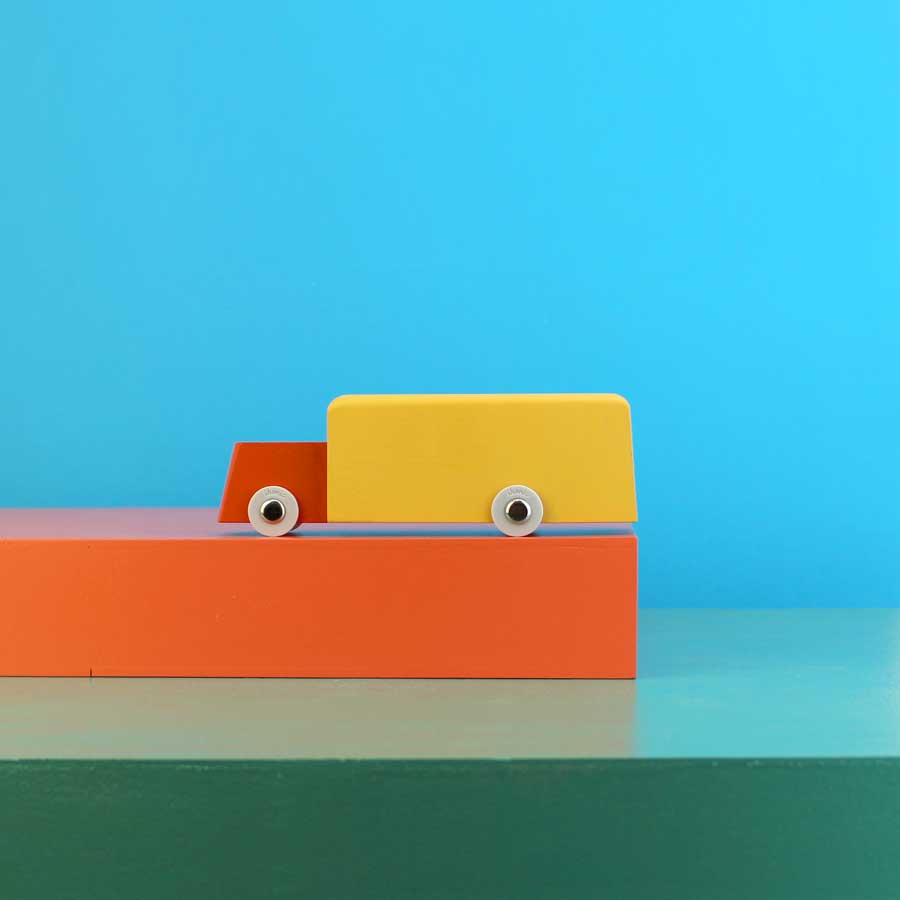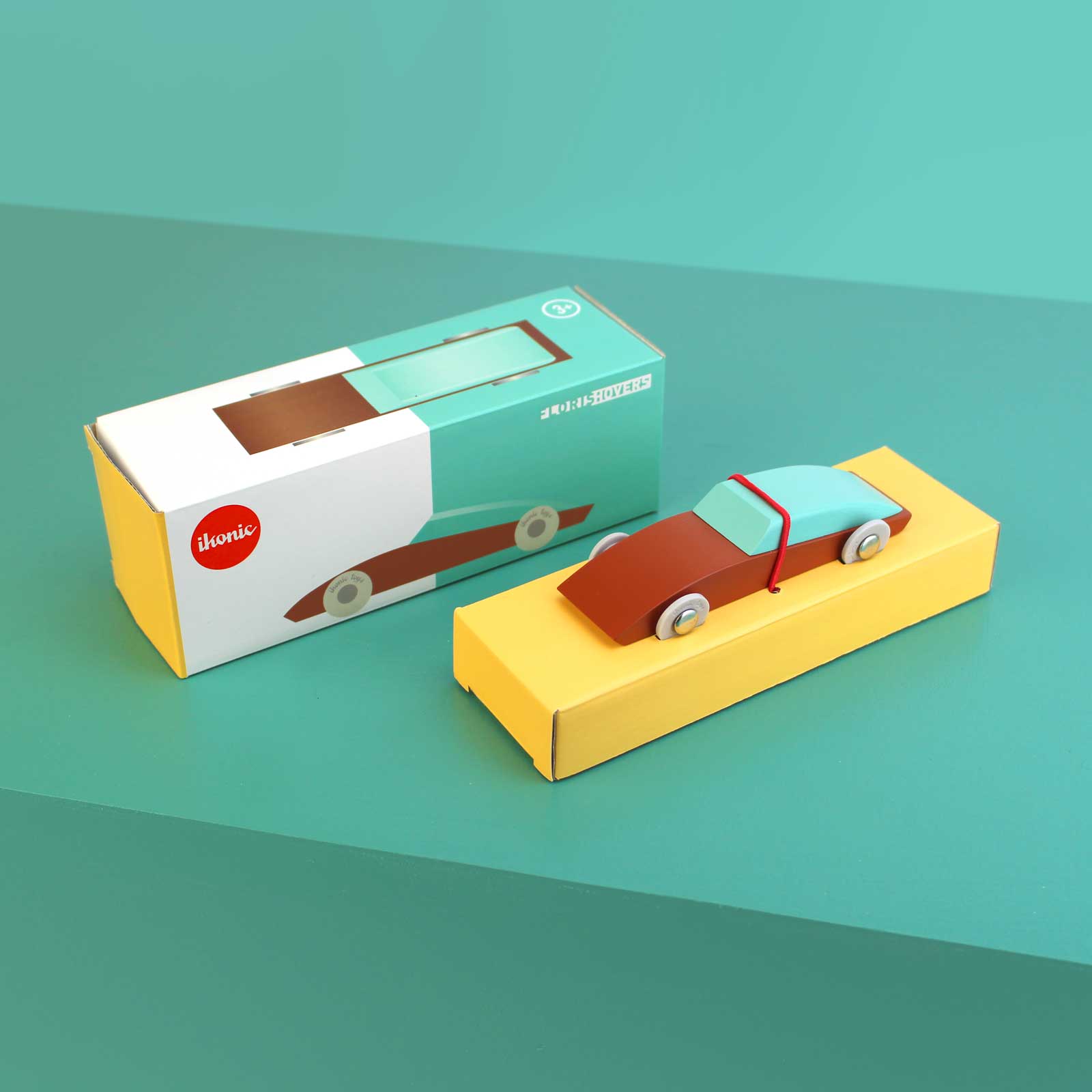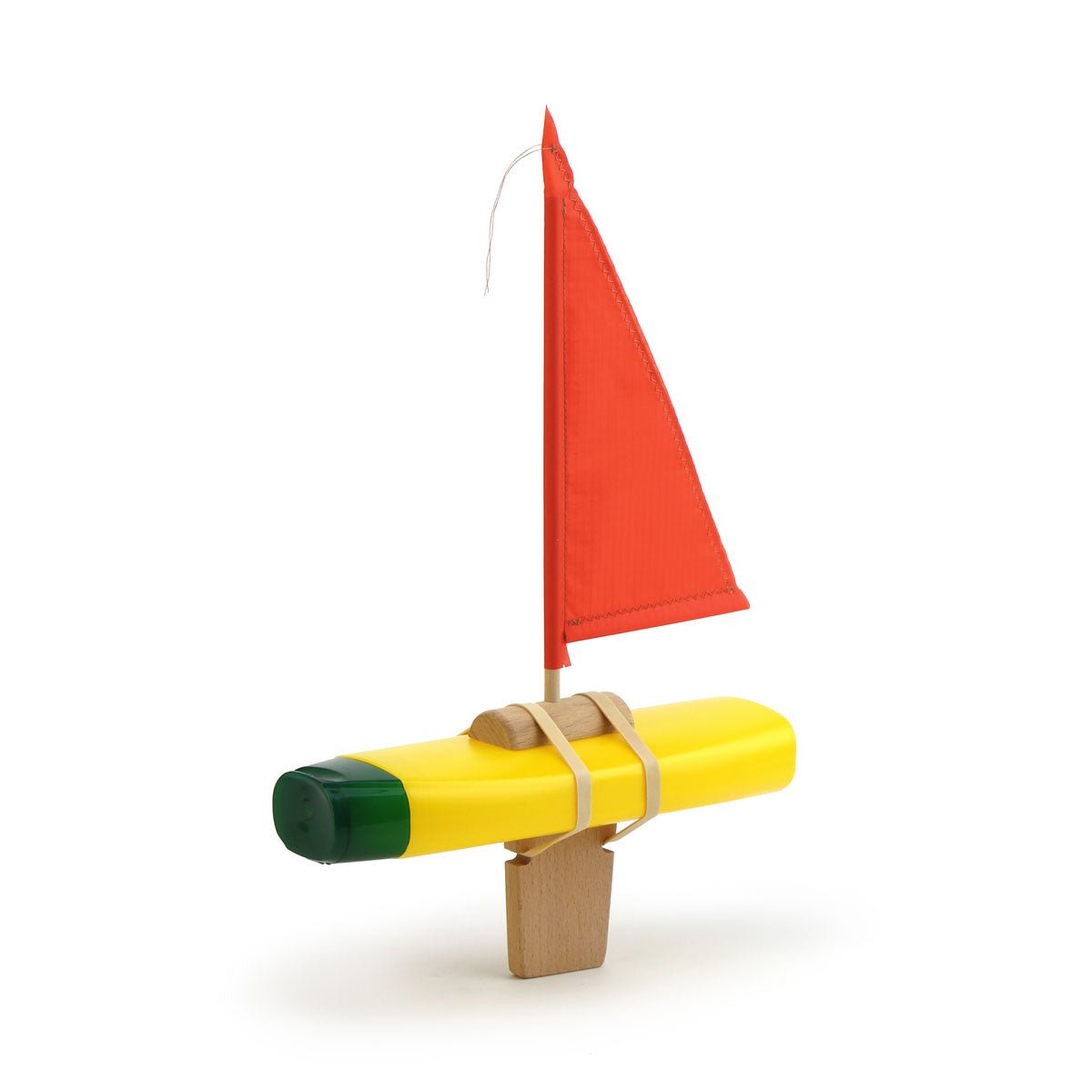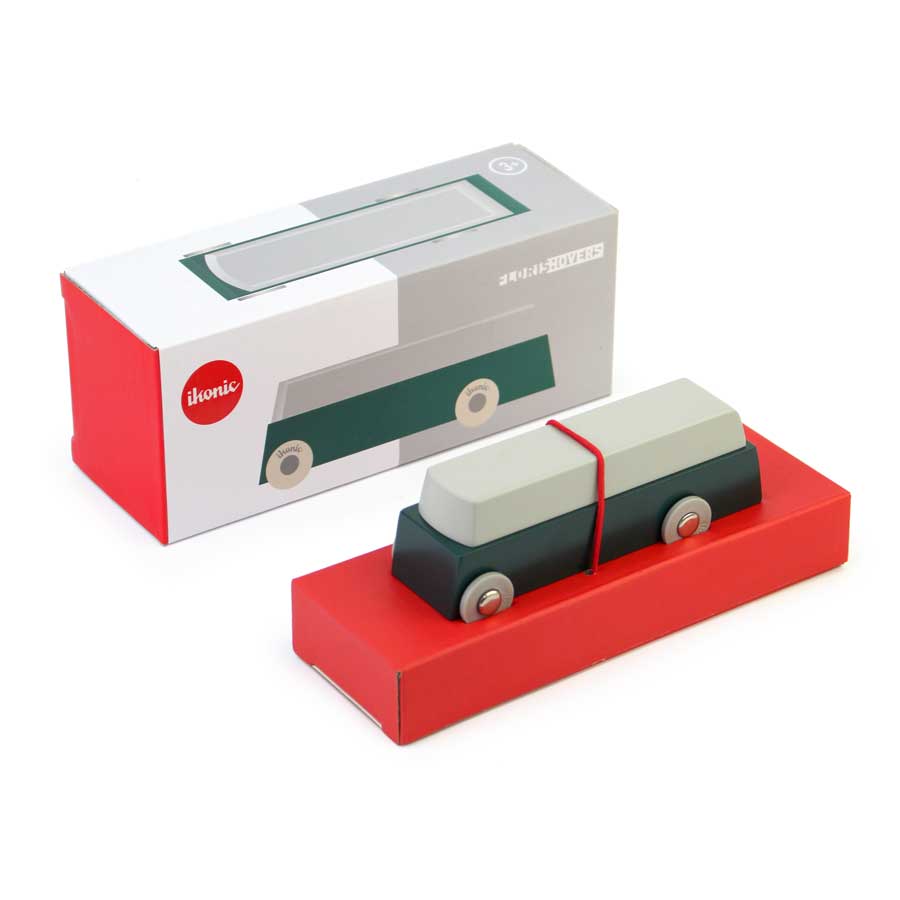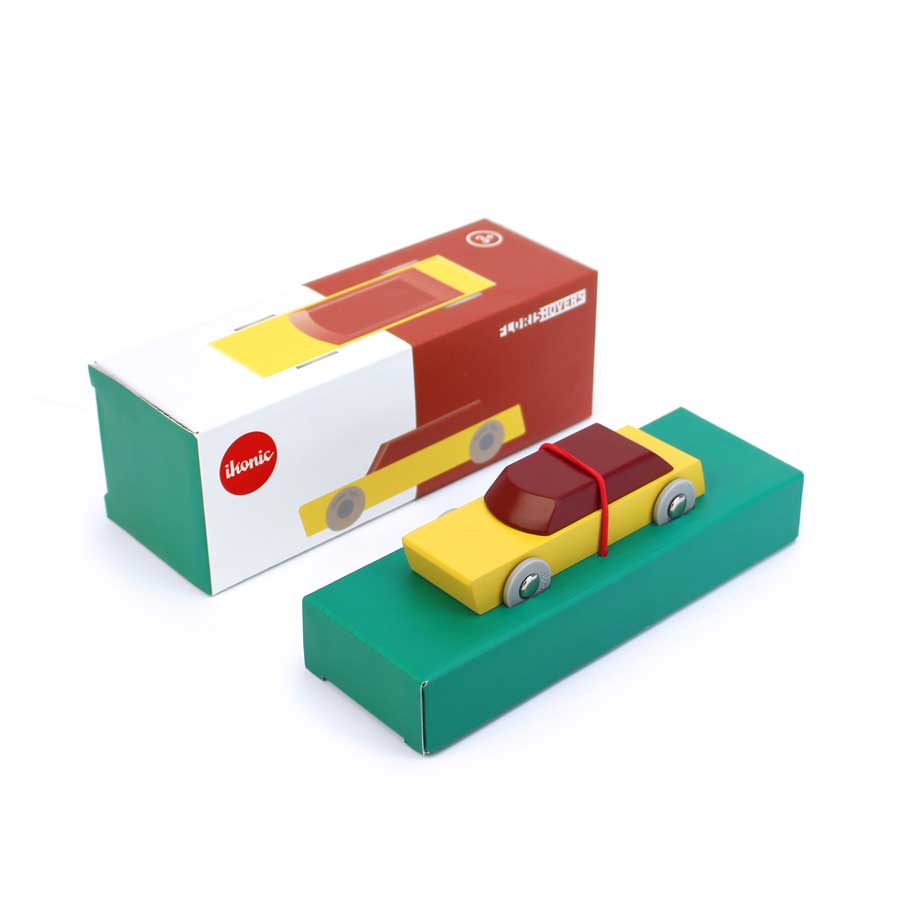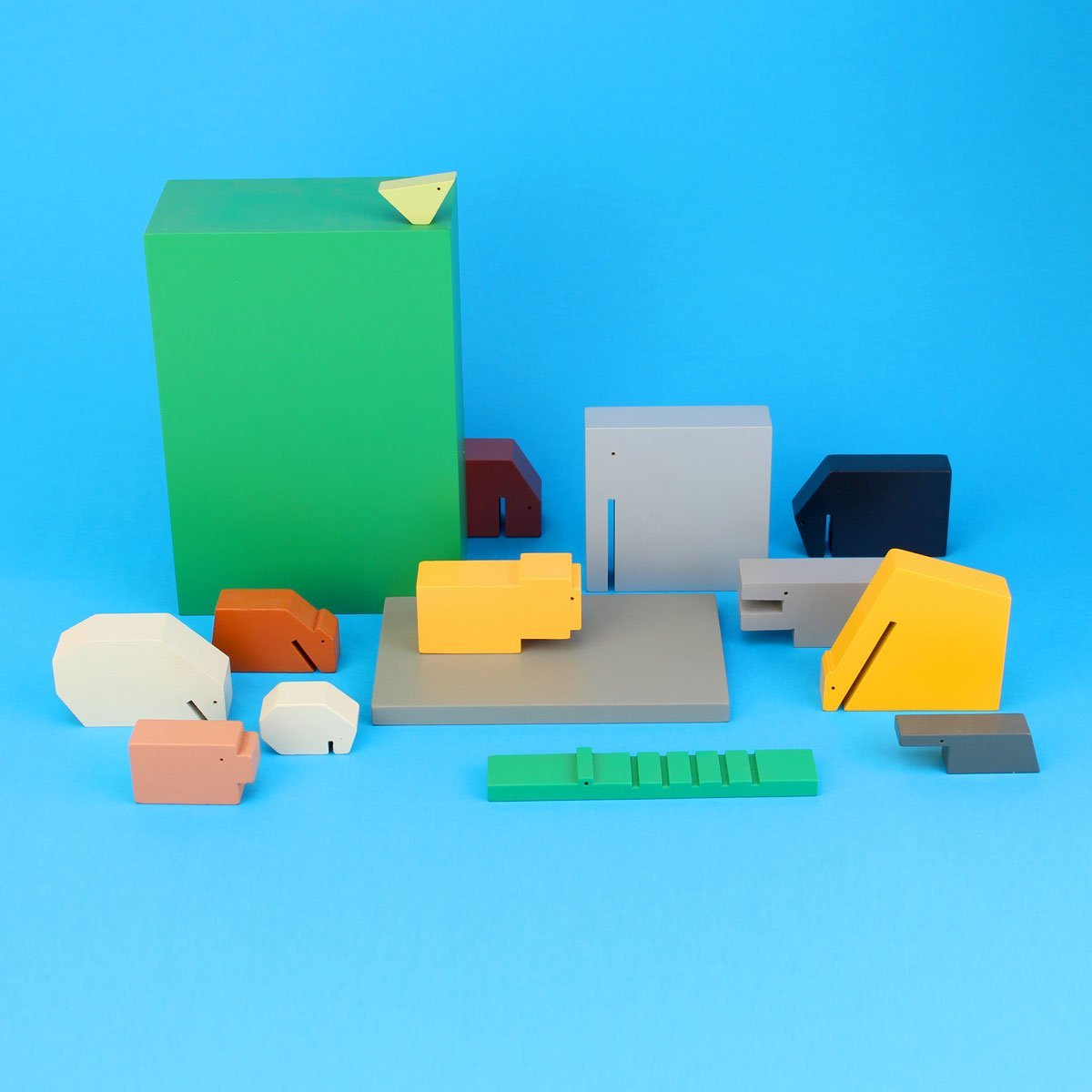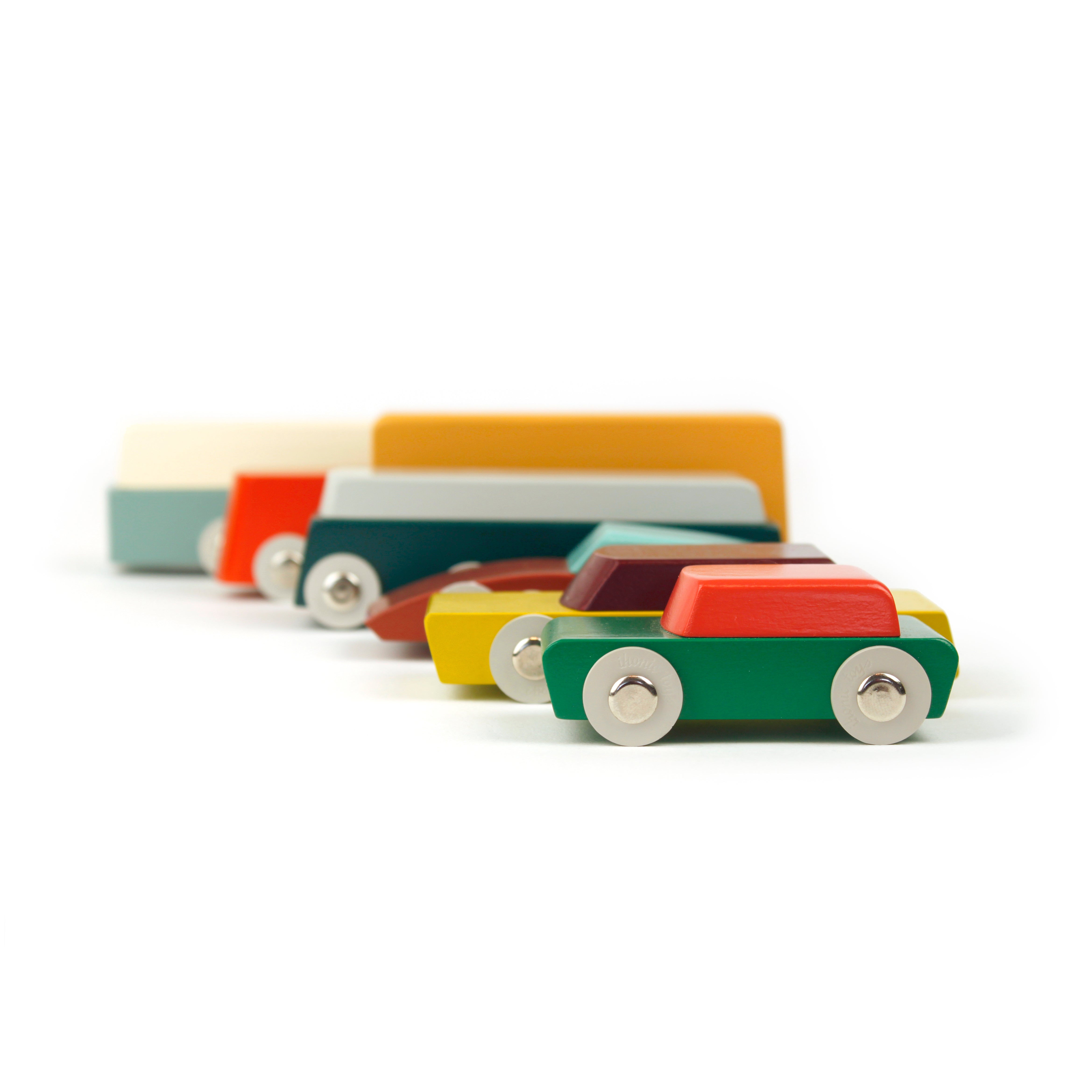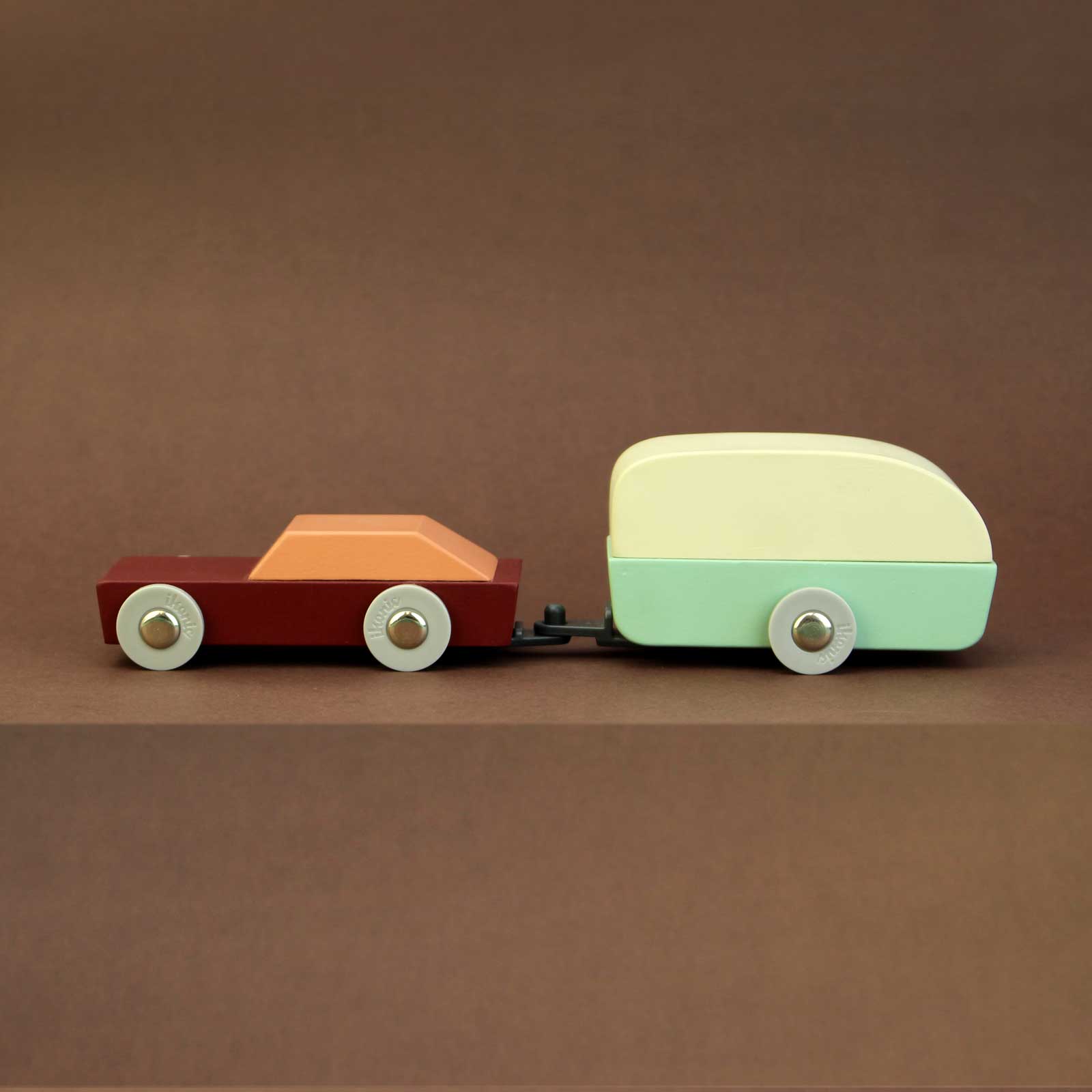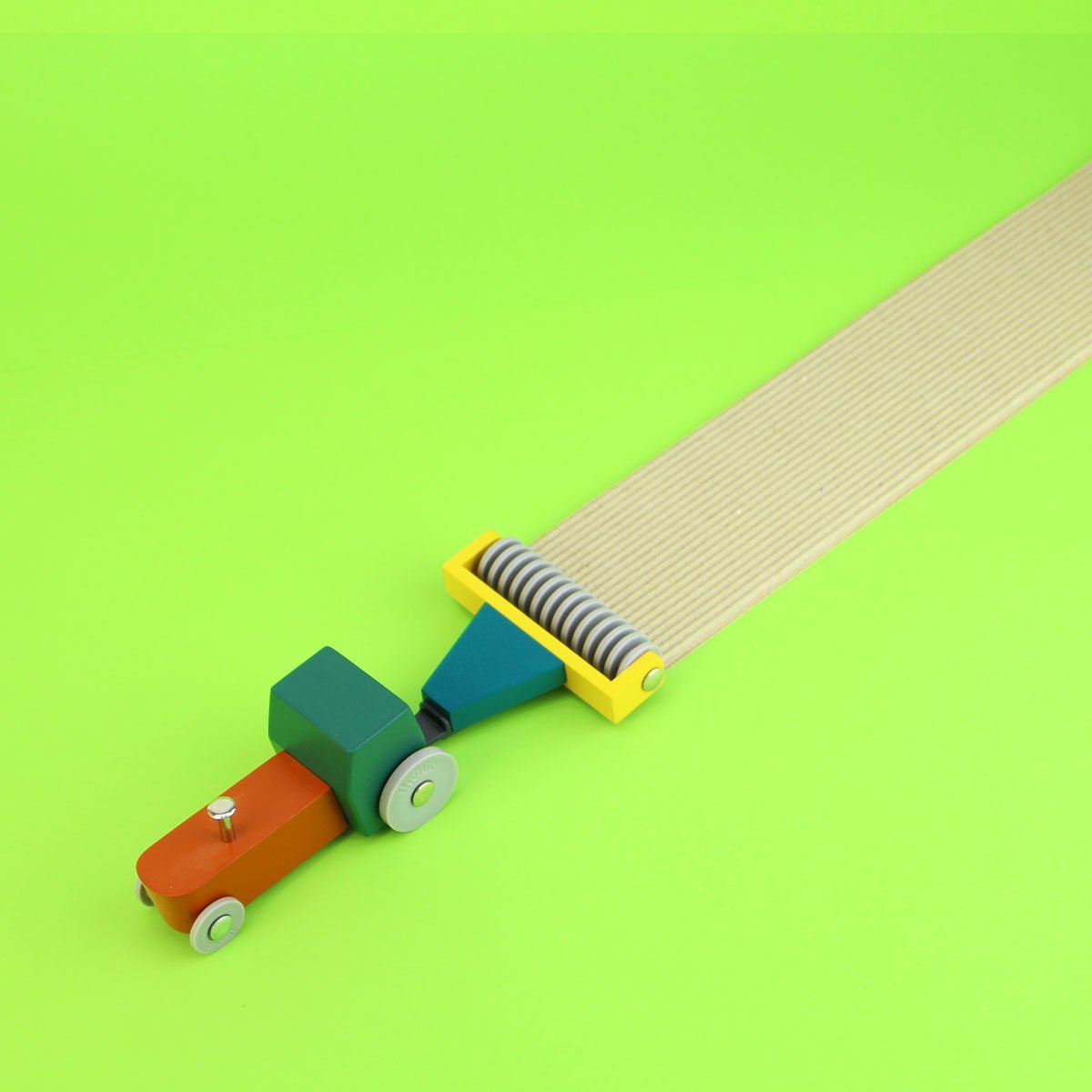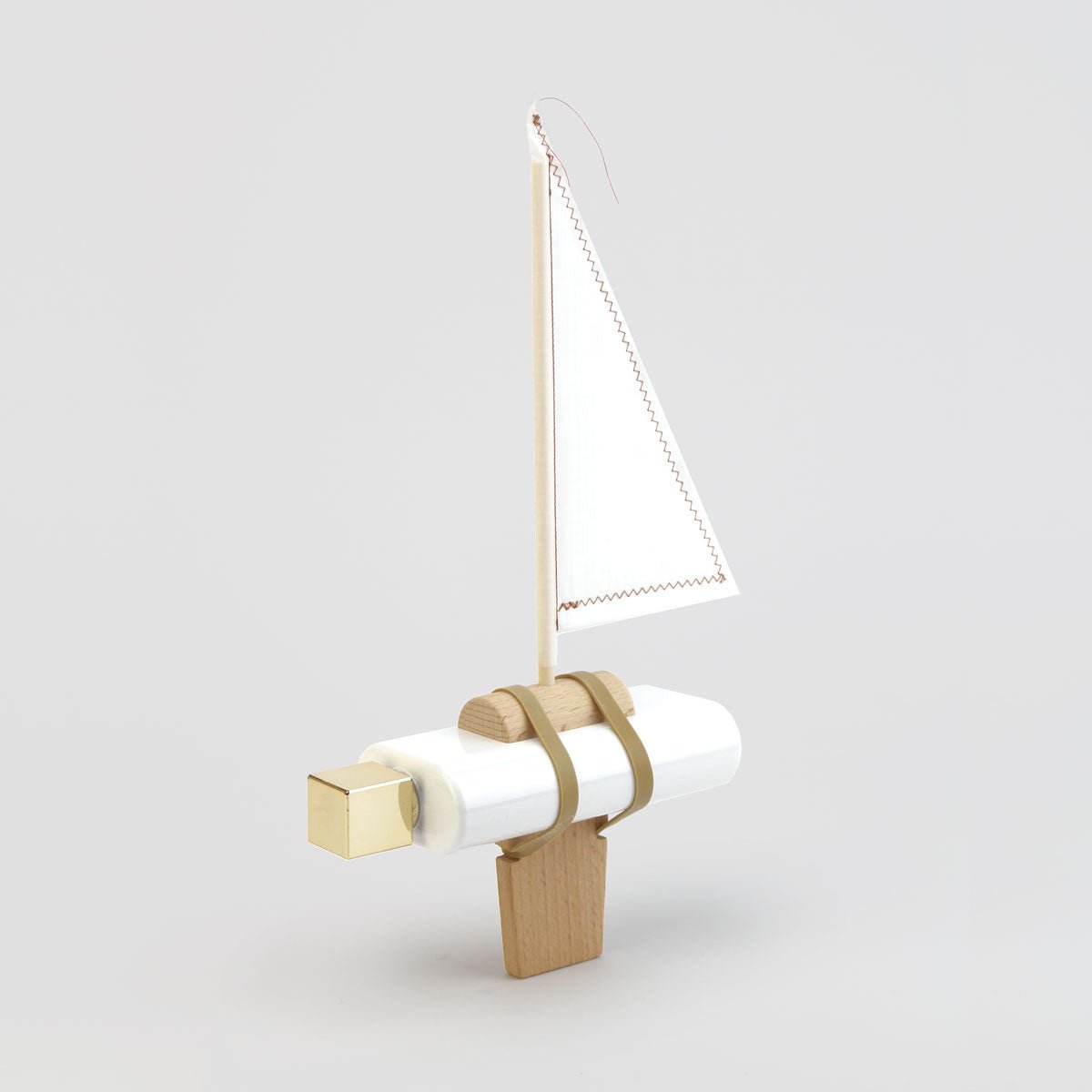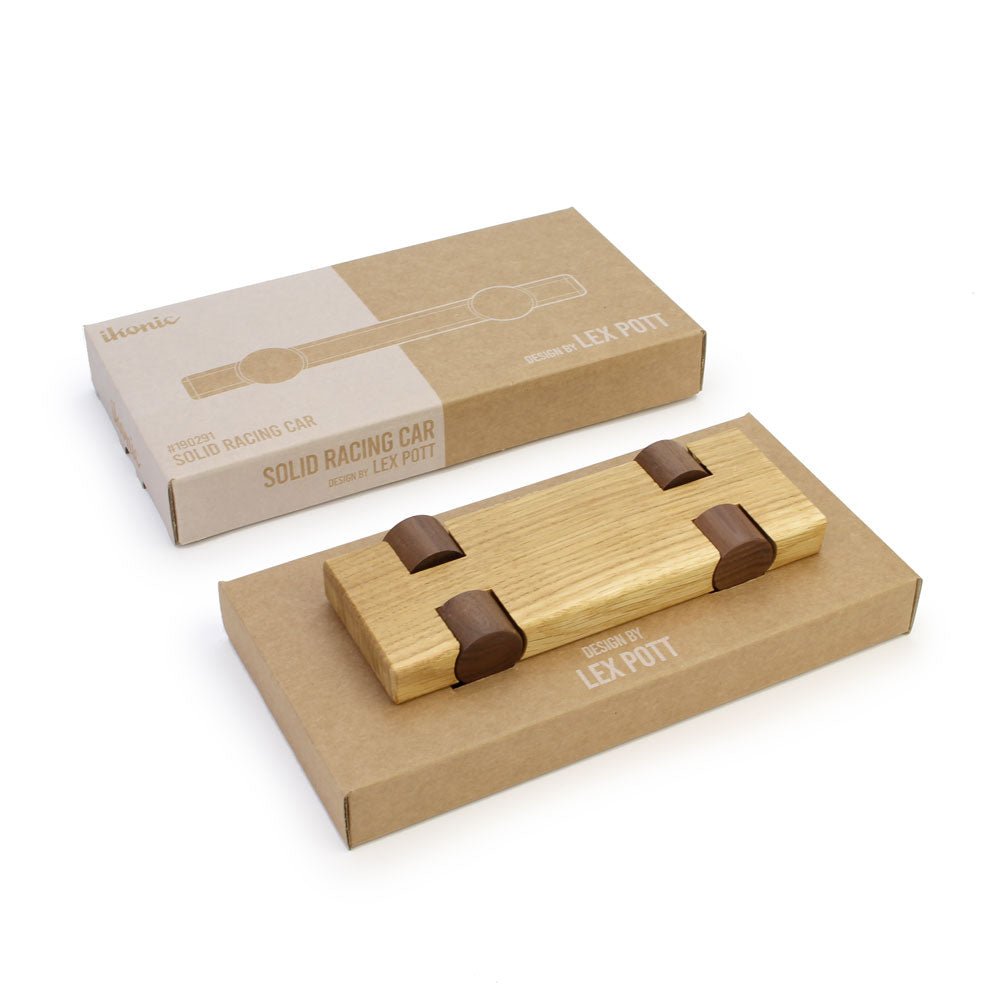
Wooden Toys
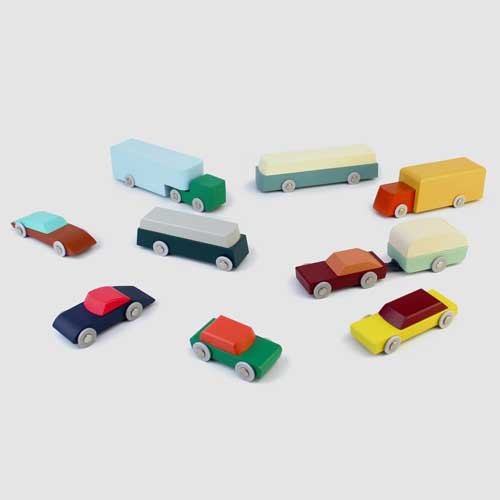
Wooden toy cars: timeless quality and sustainability
In a world increasingly dominated by digital gadgets and plastic toys, there has been a renewed interest in wooden toys. The charming toys hark back to nostalgia, as well as having numerous sustainability and development benefits. The appeal of wooden toy cars is greater than ever, and there are numerous reasons why they are a valuable choice for children and parents today.
Wooden toy cars and vehicles typically have a classic look that is hard to match. The natural material and abstract design evoke a sense of simplicity and craftsmanship that is often lost in the modern toy industry. Wooden products are known for their warm and authentic look that plastic toys often lack.
The educational value of wooden toys
Toys made of wood also offer educational benefits for young children. They stimulate imagination and creativity through a range of play options. Children can invent their own adventures and develop their fine motor skills by pushing, pulling and steering.
Montessori and anthroposophical toys
Playing with wooden toys helps develop hand-eye coordination and problem-solving skills. Not surprisingly, many anthroposophical toys and Montessori toys are made of wood. Montessori toys are educational toys that encourage independent learning and experimentation. This is also known as ‘open-ended’ toys. Toys that can be played with with their own interpretation and their own rules. IKONIC's objects invite play according to this philosophy through the open-ended nature of the design.

* wooden toy cars by Floris Hovers for IKONIC
Durability
Another attractive aspect of wooden toys is their durability and sustainability. Unlike many plastic toys, which can break or deform over time, wooden toy vehicles are often robust and can withstand heavy use. In addition, they are usually easy to repair or restore with simple tools. Because the toy is very robust, and because the owners often attach themselves to the wooden object, it is often passed on to future generations. Herein lies the real durability, and IKONIC strives to create objects that are timeless and of high aesthetic quality, and that this allows them to survive generation after generation.
Wood is a renewable material, IKONIC uses European FSC wood, usually beech wood comes from sustainable forests. This is in stark contrast to plastic toys, which often come from non-renewable fossil fuels and are difficult to decompose.
IKONIC's wooden toy vehicles are free of harmful chemicals that are sometimes found in plastic toys. In accordance with the European toy safety requirements, safe (water-based) paints are used. Plastic has been chosen for the wheels, as wooden wheels often break off in the grain direction and are more difficult to move.
History
Nowadays there are still several Dutch brands that develop wooden toys. However, production almost always takes place abroad. In the 20th century, the Netherlands still had many wooden toy manufacturers such as OKWA, Sliedrecht, SIO, Nooitgedagt, THEDO, WICO, ADO, among others. The factories were mainly located in the vicinity of Waddinxveen (near Rotterdam) and in the east of the Netherlands. The last wooden toy manufacturers in the Netherlands stopped in the 80s. In contrast to other old toys, which are eagerly collected and traded, old wooden toys are worth remarkably little these days.
An exception is the toys of ADO from the thirties, which are collected fanatically. The reason for this is the special appearance of the toys. The ADO designer Ko Verzuu was very influenced and inspired by 'De Stijl', the art movement of which famous artists such as Gerrit Rietveld, Bart van der Leck and Piet Mondrian were members. Designer Floris Hovers is known to be a great lover of ADO toys, there are various references in his work. The CODA museum in Apeldoorn has a large collection of ADO toys that are definitely worth a visit to the museum.

* truck of ADO, Ko Verzuu, around 1948
Production
For the production of the articles from the IKONIC range, we prefer to work with European suppliers. However, it has been found that many, if not all, wooden toy production facilities have disappeared from Europe over time (see also the section above). For IKONIC, aesthetic quality is paramount, and high demands are placed on, for example, the quality of the paint. We have not (yet) found manufacturers who can supply this quality in Europe, so the lacquered products, such as the wooden block set, are currently made in Vietnam. The unlacquered products of solid oak, among others, are made in Poland.

* Oak toy cars by Lex Pott for IKONIC
The production of wooden cars is still mostly done by hand, and requires a great deal of craftsmanship. Of course, woodworking machines are used, but especially for the high-quality finish, a lot of sanding, lacquering, sanding and finishing is still done by hand.
Design
For IKONIC, 'design' is an important theme. A high-quality design captures a designer's vision of the object, giving an object personality and a unique look. With the special wooden toy cars, the end users are presented with a different image than they know.
Although IKONIC's wooden toy cars have a very unique character, there are other brands that also make toy cars and special objects in a minimalist style. Brands such as Areaware, Playforever and Candylab are valued labels with a beautiful collection and their own fan base.

Wooden toys have been gaining considerable popularity within Dutch families in recent years. Where plastic toys dominated the toy market in the past, there is a clear trend towards buying timeless, solid and environmentally friendly toys made of wood. It is striking that more and more parents, grandparents and schools prefer toys that not only look beautiful, but also distinguish themselves by durability and safety. It is no coincidence that wooden cars, blocks, trains, and dollhouses are becoming more and more prominent in the living room and playroom. Design brands and sustainable specialty stores are cleverly responding to this demand for wooden toys, despite the higher price tag. The shift to toys made of wood is prompted by changing values within parenting: buying less, but consciously and responsibly is central.
Advantages of wooden toys over plastic
The most frequently mentioned advantage is that wooden toys are known for their robust durability. Where plastic blocks, dolls and vehicles wear out quickly, break or break down after intensive use, wooden variants often remain intact for decades. Blocks or train tracks can easily last for generations. In addition, wooden toys are easy to repair or refurbish; A crack or crack is often fixed immediately with a little glue or sanding, unlike plastic that is almost always thrown away after damage.
Another big advantage is the composition: wooden toys rarely contain harmful plasticizers such as BPA or phthalates, which are still regularly found in many plastic products. Many wooden toys are also painted with child-friendly, water-based paint and made from solid or FSC-certified wood. This minimizes the chance of exposure to toxic substances, something that weighs heavily for many parents when purchasing baby and toddler toys.
Wooden toys also score high on a pedagogical level. The usually simple design – without electronic functions, flashing lights or sound – stimulates the child's imagination. It invites children to invent their own play, develop their creativity and play together with other children. The modest weight of wood also allows children to better practice their motor skills and coordination while playing.
Eco-friendliness and sustainability: facts and figures
The environmental impact of toys is huge: it is estimated that more than 380 million tonnes of plastic are produced worldwide per year, a significant part of which ends up in toys. Only a small fraction of this is recycled, while the rest ends up in landfills or, worse, in nature. Toys made of wood, especially when provided with the FSC quality mark, come from responsibly managed forests. It is completely biodegradable and easily recyclable.
According to international statistics, wooden toys last on average three to four times longer than plastic toys. Many families pass on wooden toys to the next generation over time, creating much less waste. The production process of wooden toys is also less harmful to the environment: it requires less energy, water and there are virtually no harmful emissions. By choosing toys made of wood, the ecological footprint within the family is effectively reduced. In addition, purchasing fewer, but more sustainable toys reduces the total environmental impact in the long run.

Wooden Toy Safety: Concerns and Considerations
Safety is an important issue when purchasing toys. Good wooden toys meet the strict European safety standards, as indicated by the CE and FSC mark. The CE mark guarantees that the wooden toy does not contain loose, dangerous small parts and does not emit harmful substances during use. The FSC certificate ensures that the wood comes from responsibly managed forests.
Nevertheless, caution is advised: toys made of glued plywood or with bright lacquers may contain formaldehyde or non-saliva resistant substances. It is therefore better to choose solid wood toys or products without glued parts. Look for a certified saliva-resistant paint, especially for toys for younger children and babies who still put everything in their mouths. Cheap and unknown brand toys made of wood can sometimes have disappointing quality and composition: so always check packaging, safety marks and materials before purchasing.
Are wooden toys safe for babies and toddlers?
Good wooden toy products are extremely suitable and safe for babies and toddlers. Unlike some plastic variants, they do not contain plasticizers, PVC or other harmful substances, provided they meet European standards. When purchasing, always look for game pieces with rounded corners, sturdy connections and parts that cannot come loose. The finish should be child-friendly and non-toxic, for example with natural oil, beeswax or water-based lacquer. This allows a child to discover the world safely while playing, even with their mouth.
The risk of splintering is very small with well-finished wooden toys. However, it is important to regularly check play pieces for any damage caused by bumps or bites, especially when younger and older children play together. Every toy, no matter how solid, requires periodic maintenance and a critical eye from the parent. Reliable brands also carry out periodic quality checks to guarantee maximum safety.

Why are more and more parents consciously choosing wooden toys?
In addition to environmental and safety arguments, the appearance of wooden toys also plays a major role. It is calmer, warmer and often timelessly designed. Many parents and educators experience that wooden toys offer fewer visual stimuli, making them more in line with the pedagogical vision of more conscious and calmer parenting. Wooden toys are often not a trend product and therefore do not need to be replaced all the time; Some sets, such as a wooden train track, remain popular for years.
The pedagogical advantage of wooden toys is obvious: because they contain fewer controlled functions and electronics than plastic toys, they stimulate imagination, cooperation and creativity. Children are given the space to come up with their own stories and constructions. Research shows that children play independently longer and more intensely with wooden blocks or dolls than with plastic toys that have one function, make a lot of noise or give commands. This not only promotes the pleasure of playing, but also social-cognitive and motor development.
Wooden toys and child development
Toys made of wood have been praised for decades for their development-stimulating qualities. It stimulates fine and gross motor skills because children have to stack blocks, push wagons or put shapes in a puzzle. The often simple design stimulates creative thinking and problem-solving skills: a block can be a house, car or bridge, depending on the child's imagination. By working together with brothers, sisters or friends, the child also learns social skills such as sharing, waiting and consulting. The lack of electronic functions challenges children to shape their own play world. It is precisely this 'open-ended' approach that is praised by pedagogues.
Comparison: Wooden Toys vs Plastic Toys
- Lifespan: Wooden toys are stronger and last longer. It can survive generations, while plastic toys break faster and show wear and tear.
- Environmental impact: Plastic is non-biodegradable and difficult to recycle. Wooden toys are biodegradable and usually made from renewable raw materials from responsibly managed forests.
- Safety: Wooden toys (from good brands!) do not contain BPA, plasticizers or other harmful substances. This is in contrast to some cheap plastic products. However, not all wooden toys are by definition risk-free: always check quality marks and finish.
- Development: Wooden toys promote creativity, imagination and motor skills thanks to the simple design. Plastic toys are often more interactive, but give less room for open play.
- Price: Wooden toys are usually more expensive to buy, but they pay for themselves because they last longer and are often passed on or sold second-hand.
Special features of IKONIC wooden toys
The Dutch design brand IKONIC distinguishes itself from other manufacturers of wooden toys. Toys from IKONIC, such as the popular beechwood cars, caravans, and animal figures, stand out for their sophisticated design, responsible use of materials and unique appearance. Collaborations with well-known designers such as Floris Hovers, Lex Pott and Joost Swarte result in stylish and recognizable objects that appeal to both children and adults. The FSC-certified wood and safe lacquer ensure that the products are both durable and safe, while rounded corners and a solid finish minimize the risk of splinters.
Another strong point is that IKONIC's wooden toys are packaged in attractive packaging. This makes the products ideal as a (maternity) gift or as a permanent design object that will later earn a place in your home. Also characteristic: the minimalist style, which invites children to unlimited open play. The sets are robust and designed to last from generation to generation. By investing in a wooden car or caravan from IKONIC, you are not only choosing a piece of nostalgia, but also an accessible form of design in the daily lives of young families.
Frequently asked questions about wooden toys
- What are the advantages of wooden toys over plastic toys?
Wooden toys are more sustainable, safer, more environmentally friendly and stimulate creativity and self-reliance in children. Due to its robust construction, the use of natural materials and the often simple design, it is more effective in stimulating development than many modern plastic toys.
2. Are wooden toys safe for babies and toddlers?
Yes, if it has the CE mark, rounded corners and a child-friendly non-toxic finish. Always check for loose parts or damage.
3. Why are more and more parents opting for toys made of wood?
Especially because of its durability, safety for their child, environmental friendliness and the timeless, reassuring design that suits conscious upbringing.
4. Are there any special features of IKONIC's wooden toys?
IKONIC toys are designed by well-known Dutch designers, made from FSC-certified wood, have a minimalist look, meet strict safety standards and are luxuriously packaged. It is intended to last for generations and serves as a design element in the home.
5. Are wooden toys always more sustainable than plastic?
When it comes to solid wood from responsibly managed forests (FSC), it usually does. Pay attention to the quality; Cheap laminated or thin wood is less durable. You can read more about sustainable toys here.
6. Are there no harmful substances floating around in wooden toys?
This is out of the question with certified, solid and neatly finished toys. Pay attention to quality marks; Vigilance is required with unknown or cheap brands.
7. Difference in purchase price?
Wooden toys are often more expensive, but the long lifespan, safety and passability to future generations make them a wise investment.
Tips for buying wooden toys
Do you want to buy wooden toys? Then pay attention to the following: preferably choose solid wood toys with the FSC and CE mark. Check the finish: rounded corners, no splinters, and a finish with natural oil or lacquer. Preferably buy from well-known (web) stores or specialized brands. Read reviews and inspect the toy for reliability yourself. Consider buying second-hand: many wooden toys remain of excellent quality, so that they can be passed on well in a circular economy.
Wooden toys are sustainable, safe and environmentally friendly – provided you choose quality brands with the right quality marks. It provides children with a basis for creative play and contributes to an environmentally conscious education. The beautiful, timeless look suits modern families who value peace and quality. The popularity of wooden toys appears to be more than a trend: it is a conscious choice for a healthy, safe and stimulating play environment, for now and for future generations.
Read more:






